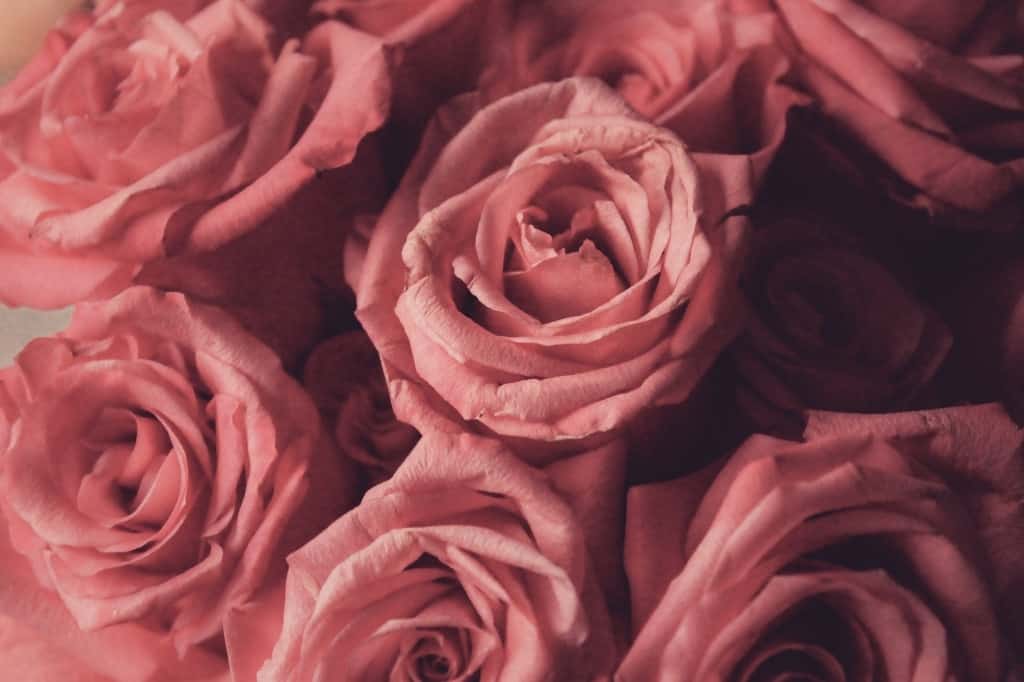Did you know there are many pink things in nature? In this article, we will discuss about things that are pink. And we’ll only talk about things that are naturally pink.
Despite appearances, naturally pink things can be found in flora and fauna. Plants and flowers, as well as animals, birds, fish, insects, and reptiles, are all examples of flora and fauna. Moreover, there are pink foods as well.
Pink is a color that evokes childhood and represents youth and good health. It is frequently associated with babies, little girls, and the most adorable things.
This color is derived from anthocyanins, natural pigments that give raspberries their pink color.
Do you know that pink flowers are among the most common? This is because it attracts insects for pollination while also serving as a polite warning to predators.
Below is a list of naturally pink things.
What Is Associated With Pink?
Pink, the color of innocence and passion, is associated with femininity, romance, love, sweetness, compassion, and playfulness. It also represents warmth, kindness, and tranquillity.
Pink is also the color of love in general, and it can be associated with friendship, harmony, inner peace, politeness, charm, and love.
Pink was boys’ color before World War II and was thought to be similar to red. However, pink has been associated with girls since the 1930s. Meanwhile, the color of boys has changed to blue.
While bright pink is associated with love, romance, and lust, intense shades are associated with a sense of urgency.
According to one study, girls consider pink one of their favorite colors.
A Visual List of Things That Are Pink
We’ve created a list of naturally pink things, including foods, animals, plants, and gemstones.
Pink Things
Tongue

Tongue: The color of your tongue indicates your health, and a pink tongue indicates that you are healthy. Tongues in good health are light pink.
A yellow tongue, for example, may indicate an infection, whereas a purple tongue may indicate inflammation or infection.
Pink Diamond
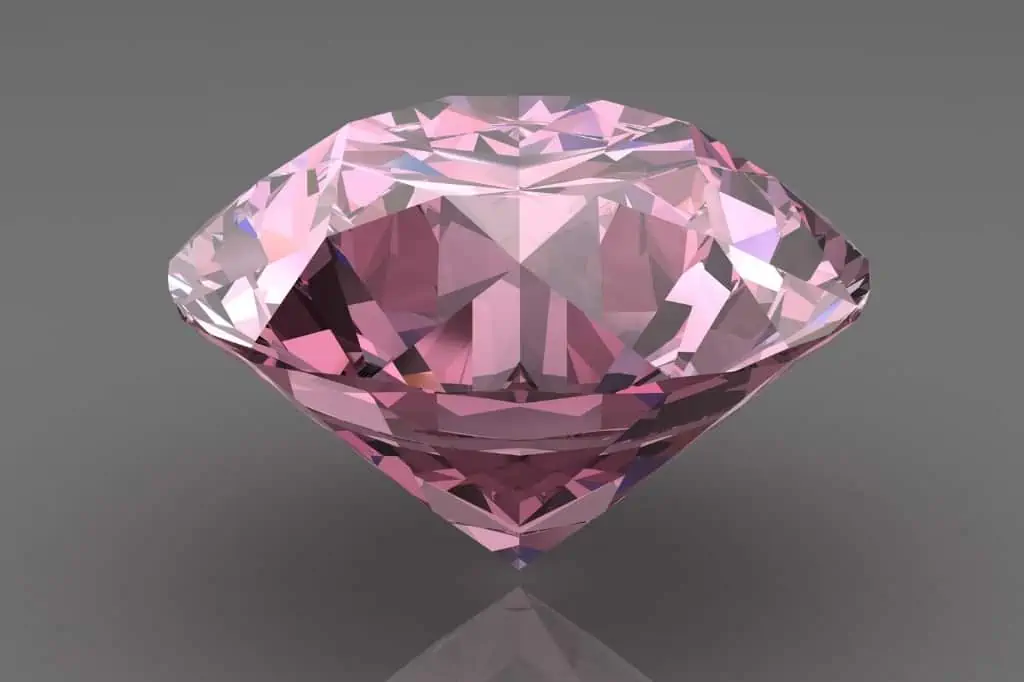
Pink Diamond: A pink diamond is 20 times more expensive than a white diamond, making it one of the most expensive naturally pink items.
The Argyle Mine in Australia is the source of most pink diamonds mined. Because of their scarcity, they are very expensive.
Pink diamonds, according to some researchers, are pink because they undergo plastic deformation during the formation process.
Rhodolite Garnet
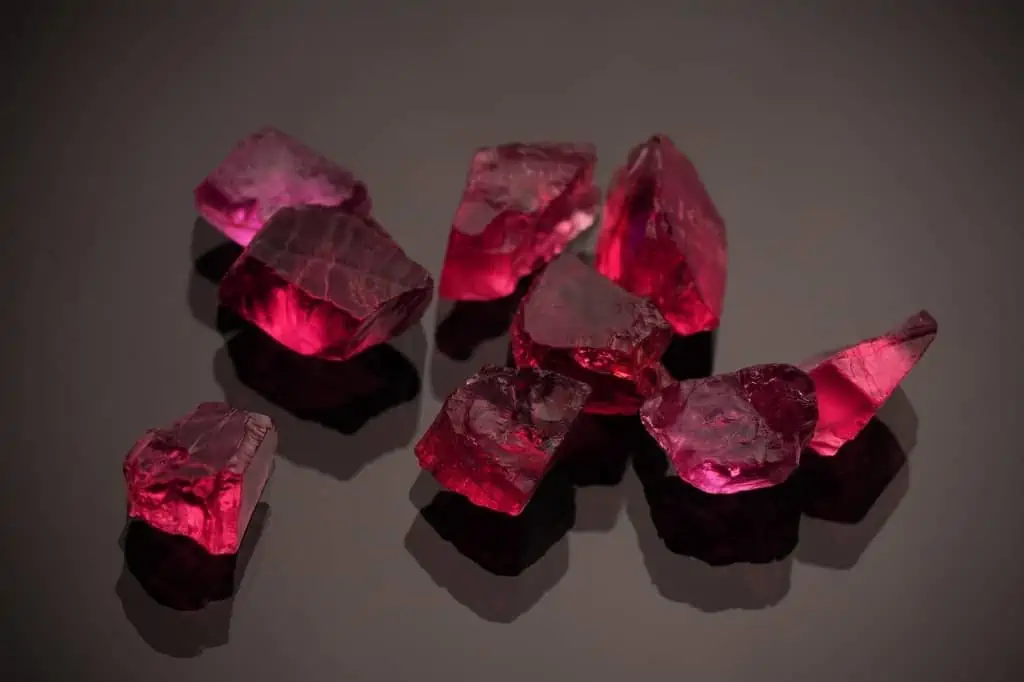
Rhodolite Garnet: These pure, light pink gemstones are extremely rare. In terms of composition, they are a cross between almandine and pyrope.
Rhodolite garnet comes in a variety of colors ranging from pink and pinkish-red to purplish-violet red.
Pink Fluorite
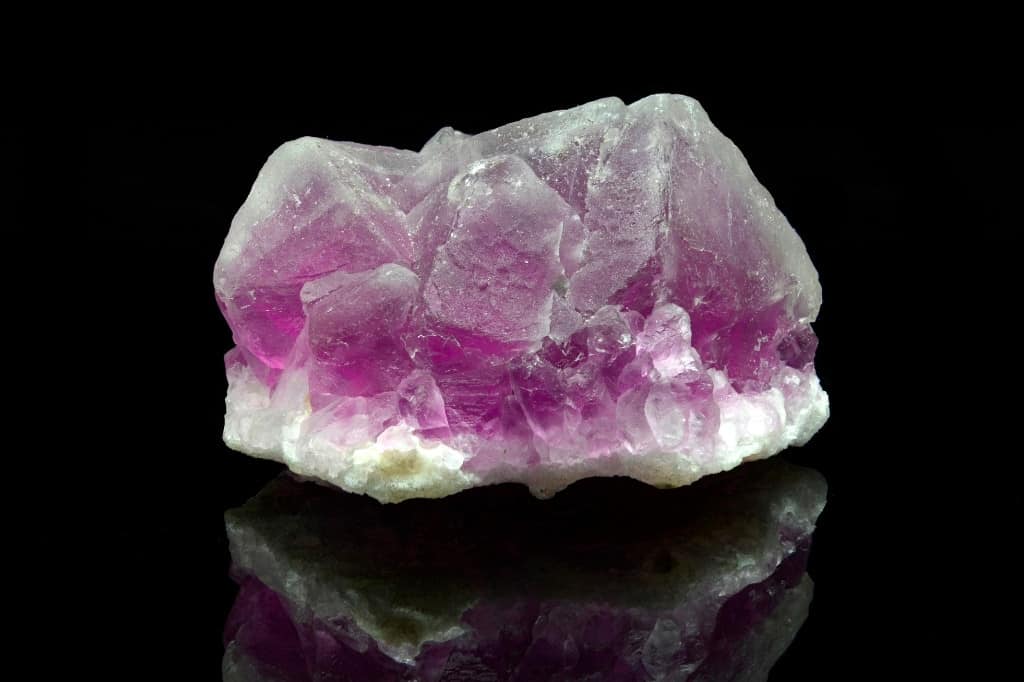
Pink Fluorite: Pink fluorite is a brilliant pink natural stone that belongs to the Halogen family. This pink fluorite is one of the rarest. It is thought to have calming and emotional healing properties.
Pink Spinel
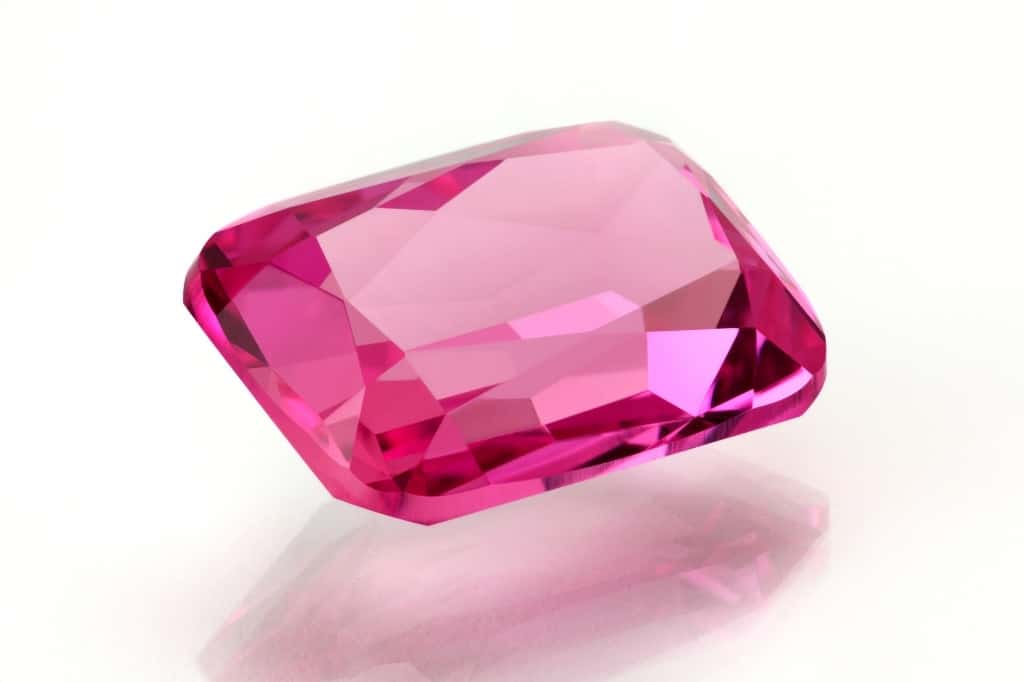
Pink Spinel: Due to its single refractivity, pink spinel is extremely rare and incredibly beautiful, displaying bright shades of pink.
Pink spinel is a very durable mineral that gets its color from trace elements of chromium, making it an excellent choice for engagement rings. It has excellent transparency and a slight fuchsia undertone.
Pink Sapphire
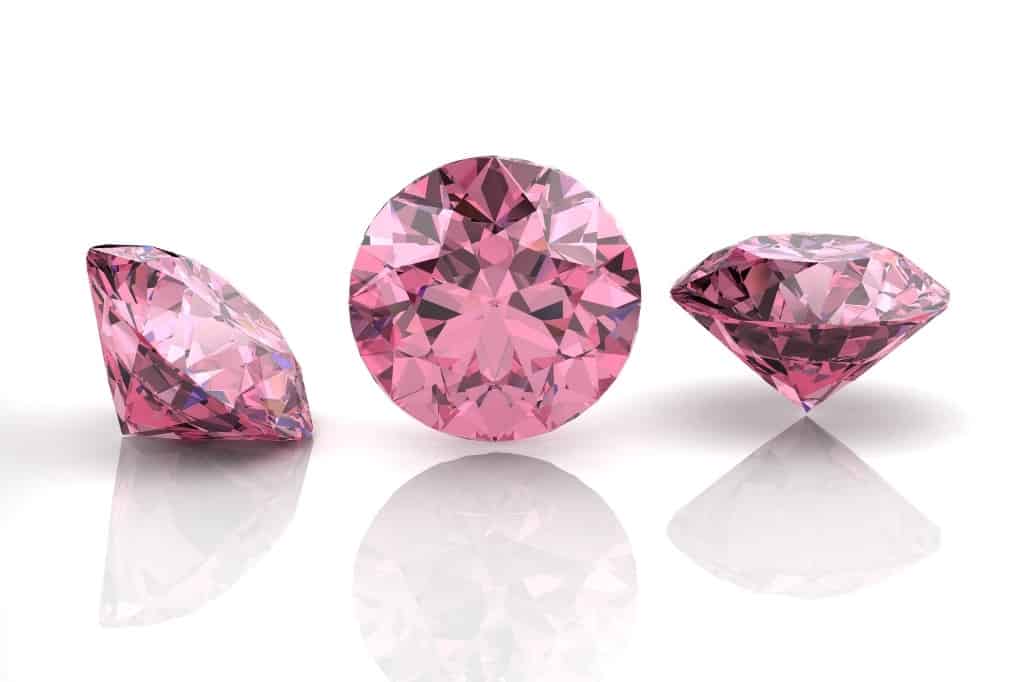
Pink Sapphire: Pink sapphire is one of the rarest sapphire colors. Pink sapphire is pink due to the presence of trace elements of chromium within the corundum crystal.
This stunning gemstone comes in a variety of pink hues ranging from light to dark. The darker the pink, the more chromium there is. Madagascar is now the leader of these things that are naturally pink.
Rose Quartz
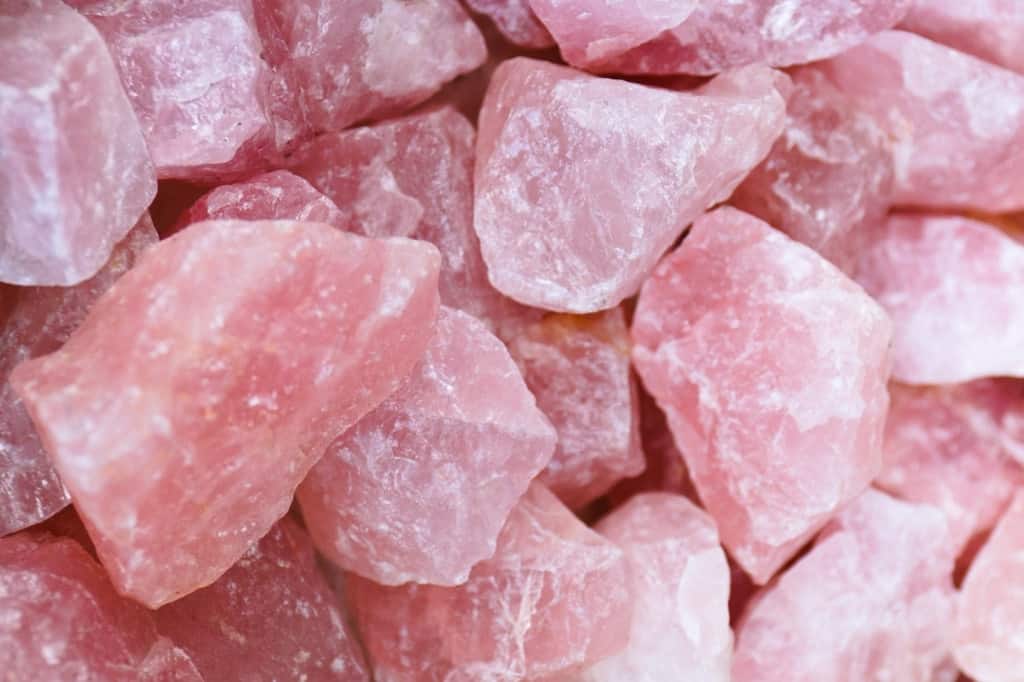
Rose Quartz: Rose quartz, also known as hyaline quartz, is a translucent and transparent pale pink mineral. Despite being a common mineral, natural rose quartz is one of the rarest colors.
It is said to have properties that promote self-love and romantic relationships. As a result, it is regarded as a potent healing crystal.
Pink Tourmaline
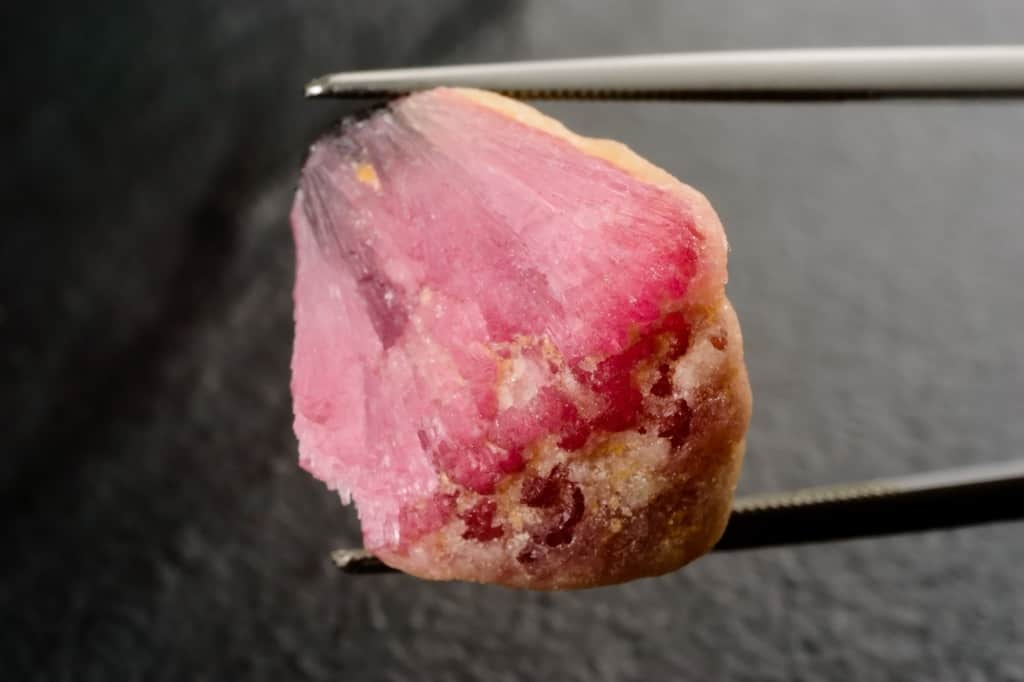
Pink Tourmaline: Pink tourmaline can be very expensive depending on the color, clarity, cut, and size. The more saturated and vibrant the mineral’s pink color, the more valuable it is. Pink tourmaline is also extremely rare.
It is said to inspire love and to have powerful emotional healing properties. Pink tourmaline is known as the “love stone,” and it is associated with creativity, compassion, and spirituality.
Pink Smithsonite
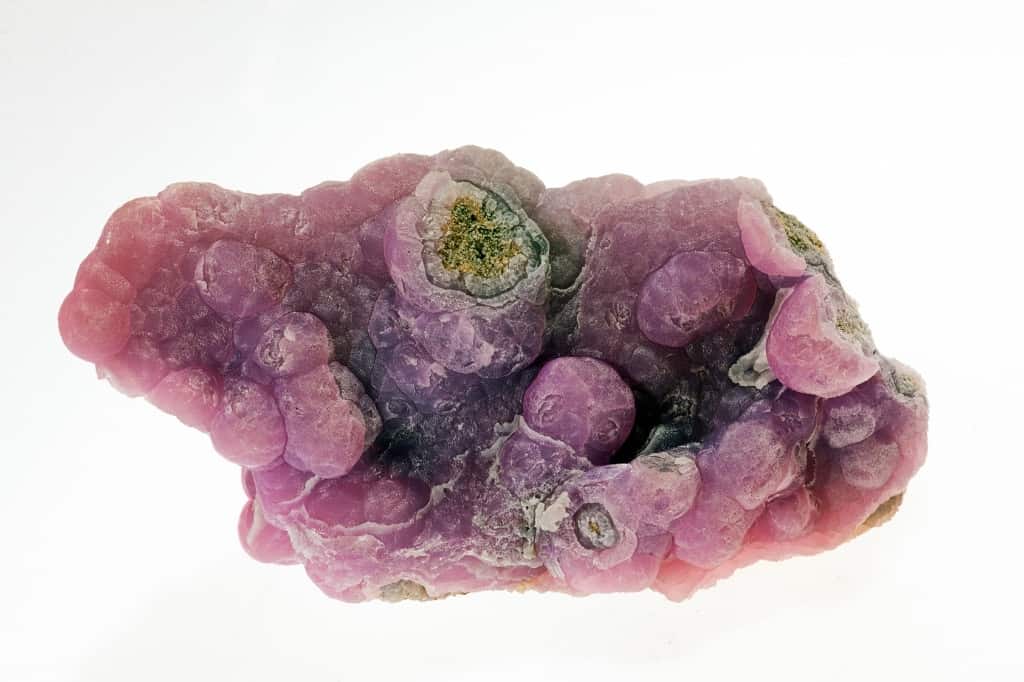
Pink Smithsonite: Prior to the 1880s, smithsonite was the primary zinc source. Pink smithsonite is now uncommon, and its color is determined by the number of cobalt impurities present.
It is typically light-cherry pink in color. This mineral is said to be excellent for preventing trauma and relieving body tension and anxiety.
Pink Rhodochrosite
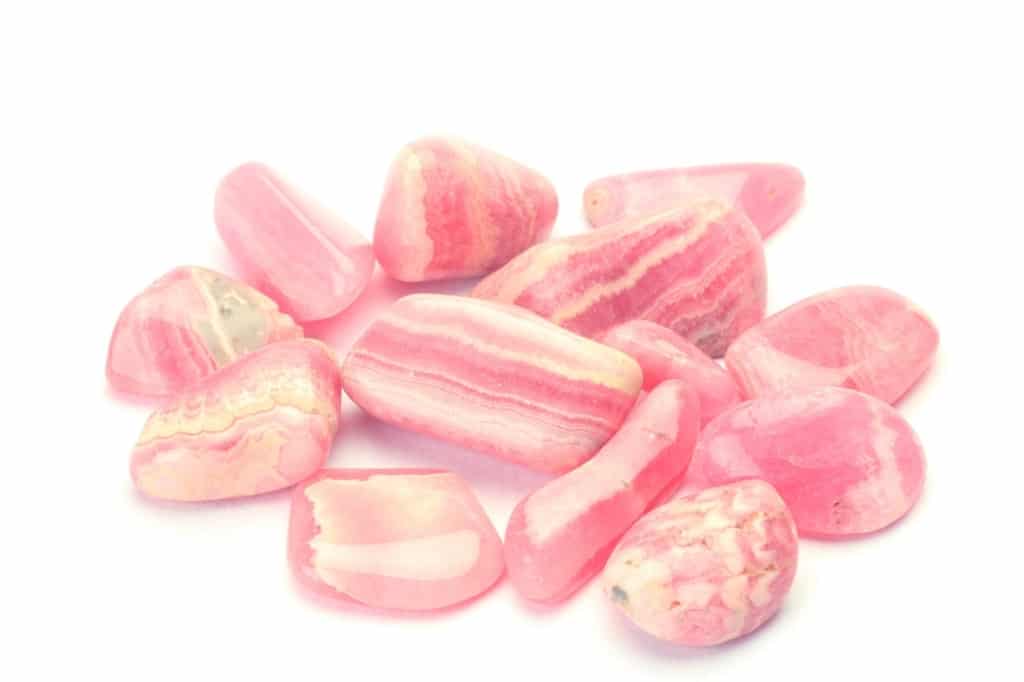
Pink Rhodochrosite: Pink rhodonite is a very rare and expensive mineral only found in a few small deposits worldwide. The Sweet Home Mine near Alma, Colorado, is one of the locations.
This manganese carbonate mineral is one of nature’s most beautiful pink things.
Lake Hillier
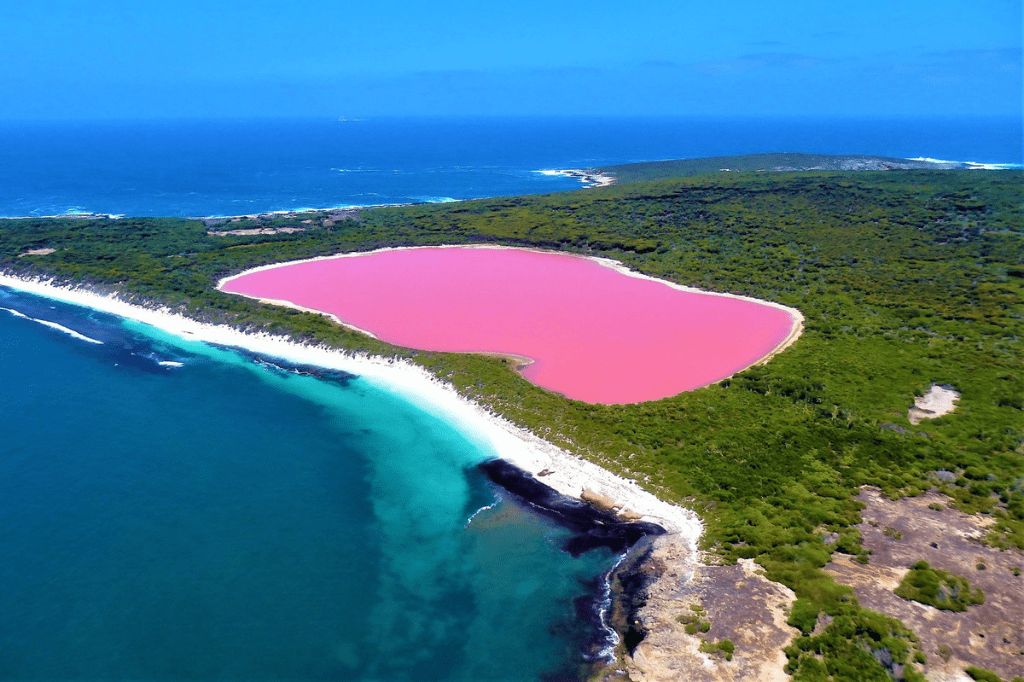
Lake Hillier: Located on Australia’s Middle Island, Lake Hillier is a bright-pink bubble gum due to algae, halobacteria, and other microbes.
Furthermore, the lake is extremely salty. The water will keep you afloat even if you don’t know how to swim.
Pink Foods
The most popular pink foods are Himalayan salt, banana squash, pink pineapples, pink pumpkins, radishes, lychees, pink radicchio, dragonfruit, and ruby chocolate. The presence of antioxidants called anthocyanins – a group of natural pigments – makes fruits and vegetable pink.
Himalayan Salt
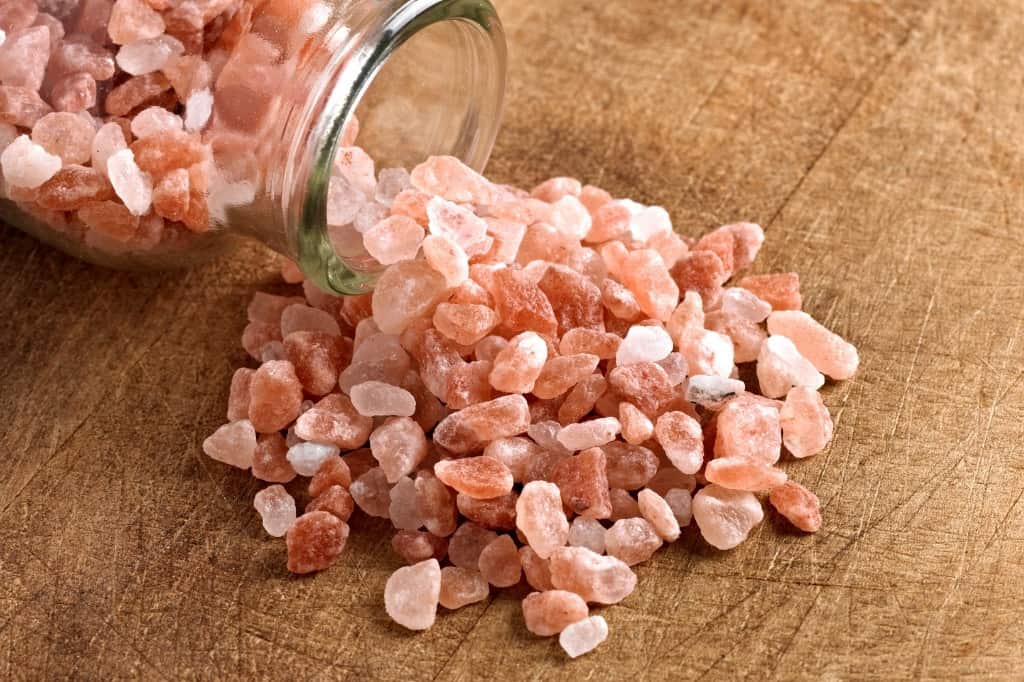
Himalayan Salt: Himalayan salt is a type of table salt used in place of refined white salt. Himalayan pink salt is high in minerals and promotes better sleep.
Himalayan salt is pink because of the minerals it contains, in addition to sodium chloride.
Banana Squash
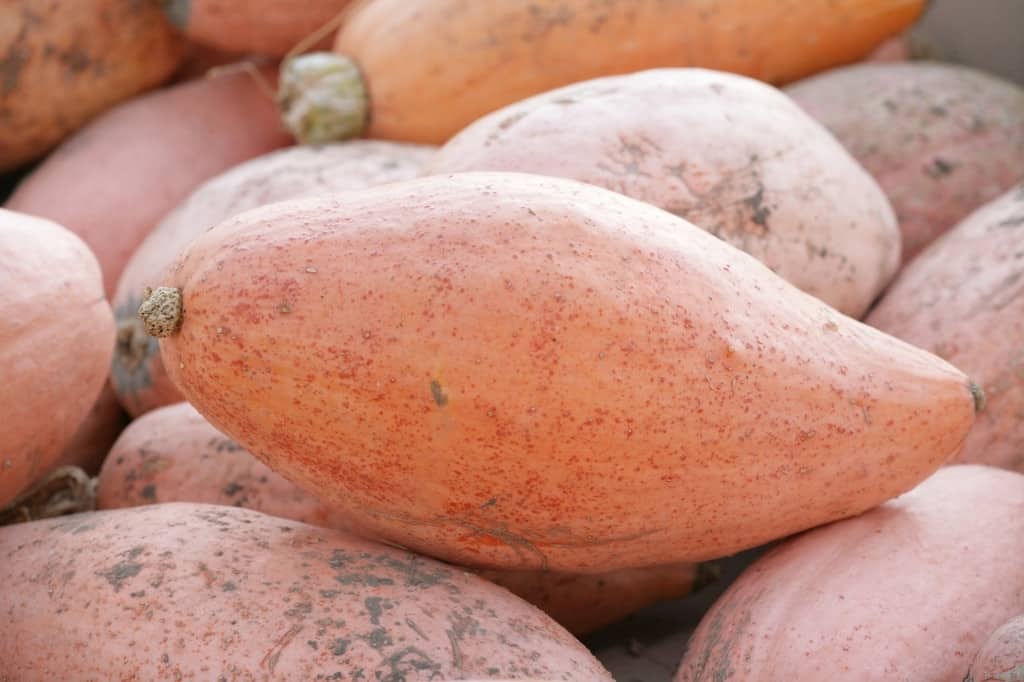
Banana Squash: A species of giant squash native to South America, banana squash is a type of winter squash.
They can grow to be 2-3 feet long and six inches in diameter. Their name is derived from their banana-like appearance.
Pink Pineapple
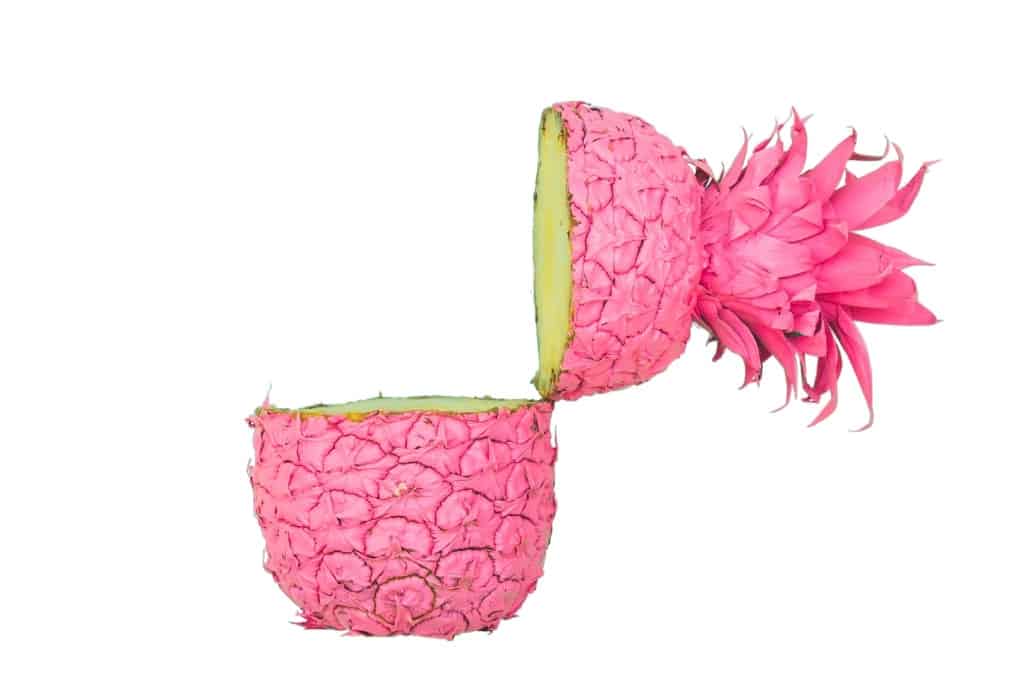
Pink Pineapple: Pink pineapple is one of the most delicious naturally pink foods. It is more expensive than the standard pineapple because it is grown in small quantities and takes between 15 and 24 months to mature.
Pink pineapple is pink due to the presence of lycopene, a natural pigment that gives it that color. It is high in vitamin C and helps to strengthen the immune system.
Pink Pumpkin
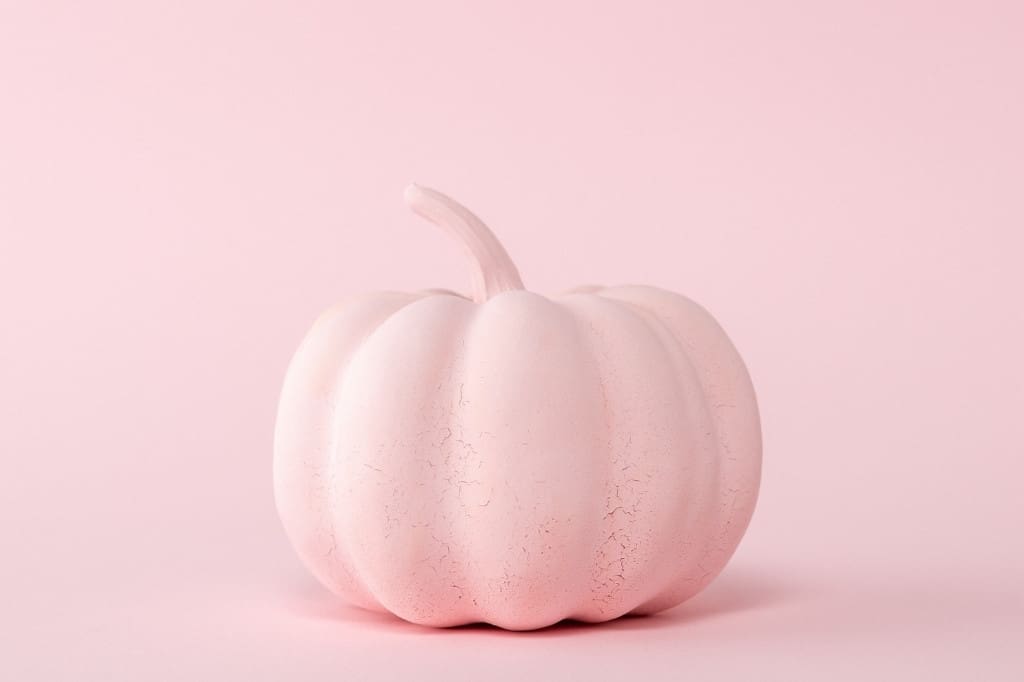
Pink Pumpkin: Pink pumpkins range in color from light pink to orangey-pink and are a relatively new hybrid variety on the market. They are grown from Porcelain Doll pumpkin seeds.
Pink pumpkins have a sweet flavor and are ideal for pies and desserts.
Bell Fruit
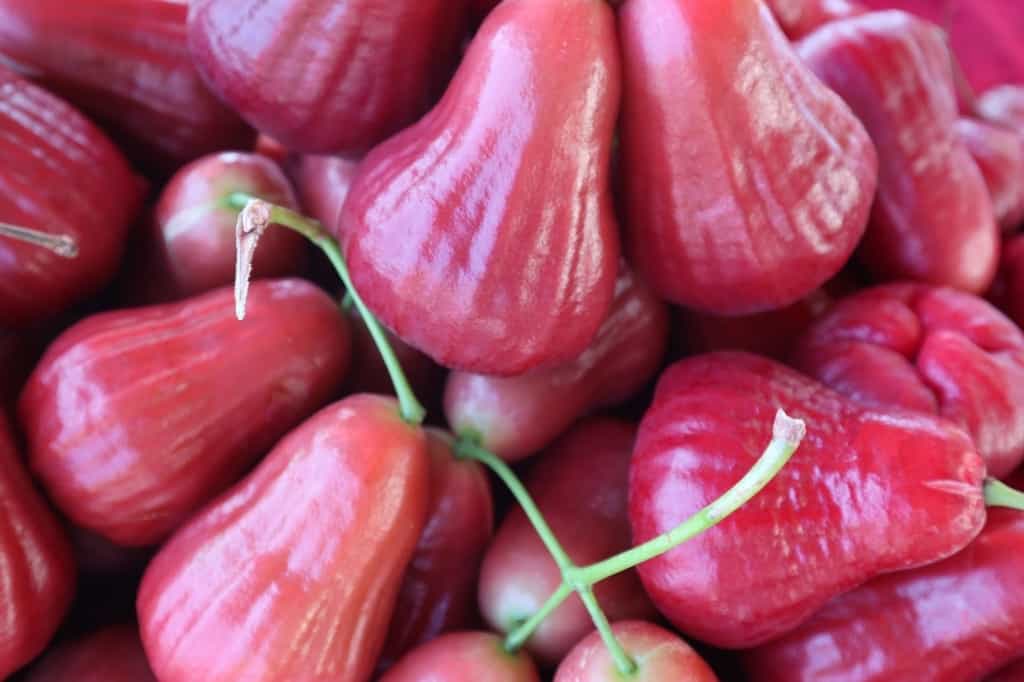
Bell Fruit: This is a small pink or white fruit in the shape of a bell. Bell fruit has a sweet, watery, crisp, and mild flavor.
Because of its anti-bacterial and antifungal properties, this bell-shaped fruit is beneficial for digestive problems.
Radish
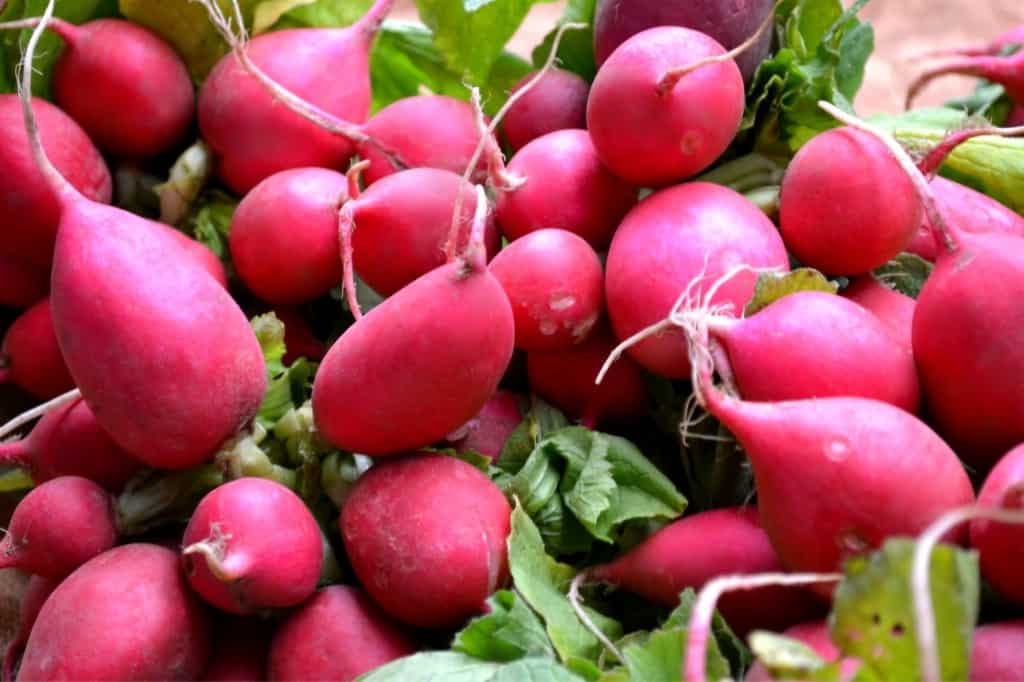
Radish: Radish is an edible root vegetable that comes in various colors, including pink, red, purple, yellow, and greenish-black. Radishes are pink due to anthocyanins (anthocyanin pelargonidin), a natural pigment.
Radishes have antifungal properties and can be used as a natural treatment for candidiasis. According to one study, radishes can help regulate blood sugar levels.
Lychee
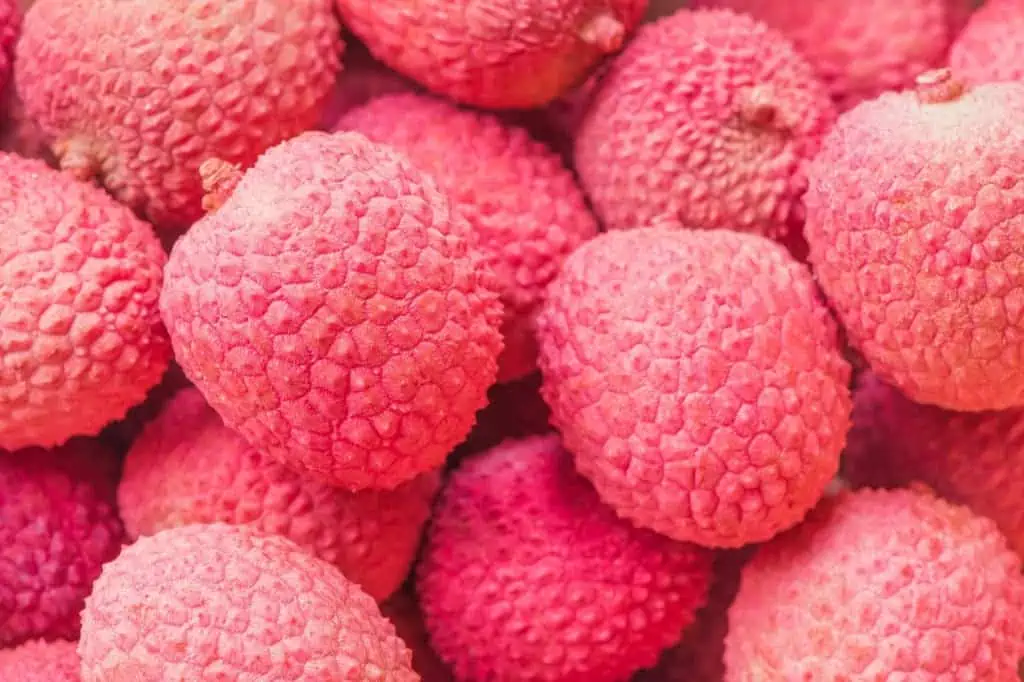
Lychee: A small tropical fruit with a distinctive pink to red peel that tastes sweet, like a cross between strawberry and watermelon. When the fruit’s skin turns pink or red, it is considered ripe.
They are high in iron, manganese, copper, phosphorus, and manganese and have heart and bone health benefits. They also protect the body from oxidative stress and other conditions like cataracts, heart disease, cataracts, and various cancers.
Pink Radicchio
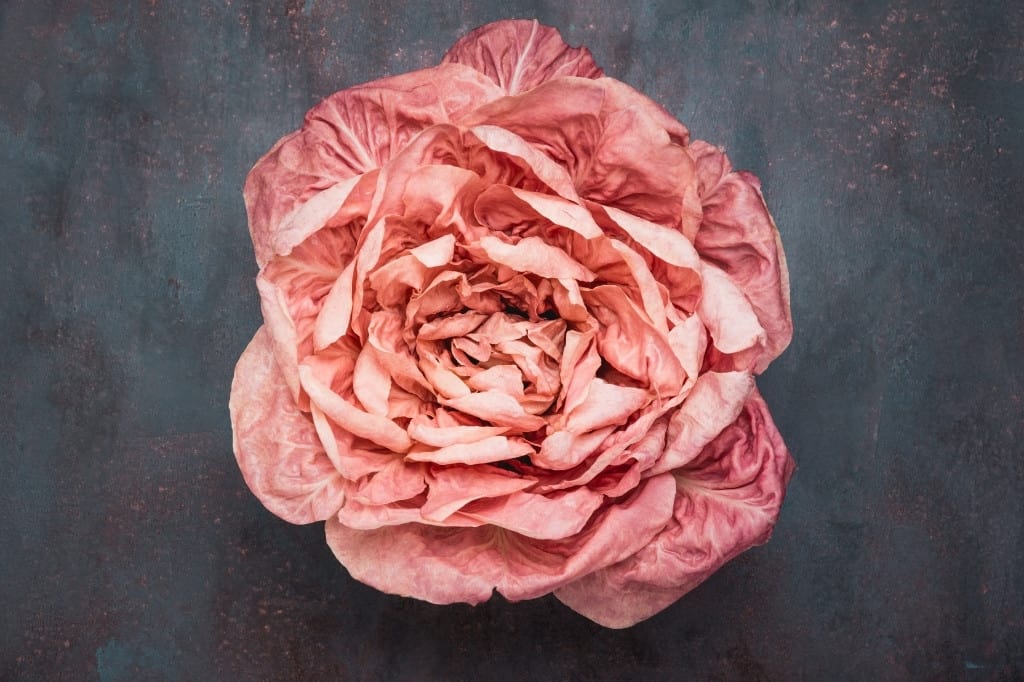
Pink Radicchio: Pink radicchio is an excellent source of zinc, copper, vitamin K, and E, as well as antioxidants such as anthocyanins, which give it its beautiful pink color.
Italians enjoy the pink radicchio they use on pizzas, salads, pasta, and even soups.
Dragonfruit
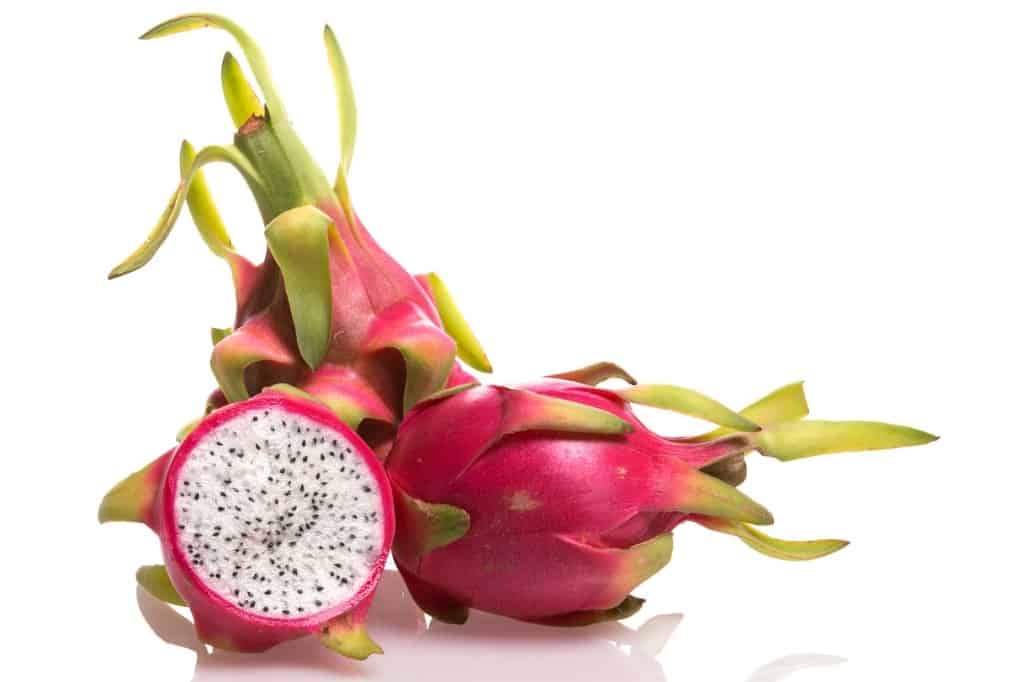
Dragonfruit: Dragonfruit is a naturally fat-free fruit with pink skin high in antioxidants such as beta-carotene and lycopene.
It is considered a superfood because it is low in calories and high in fiber, vitamins, minerals, and antioxidants.
Dragonfruit has bright pinkish skin. Depending on the variety, the inside of dragonfruit can be pink, red, or white.
Ruby Chocolate
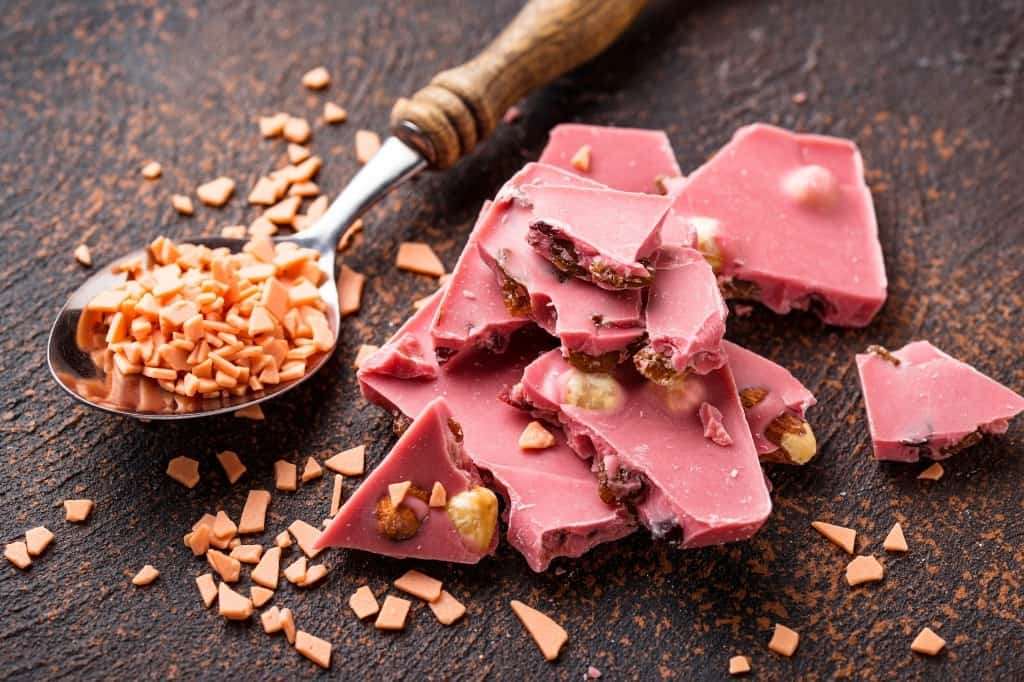
Ruby Chocolate: Ruby chocolate has a rich citrus flavor and is naturally pink, with no other artificial colors. It is made from a unique pink cocoa bean found in Ecuador, the Ivory Coast, and Brazil.
The pink color of Ruby chocolate is thought to be caused by using unfermented and fruited cocoa beans treated with acids.
Pink Plants
The presence of anthocyanins, a group of plant pigments, gives plants their pink color.
Pink plants and flowers include the pink rose, lotus, orchid, tulip, turtlehead, pink camellia, zinnia, calla lily, pink magnolia, primrose, chrysanthemum, and stargazer.
Pink Rose
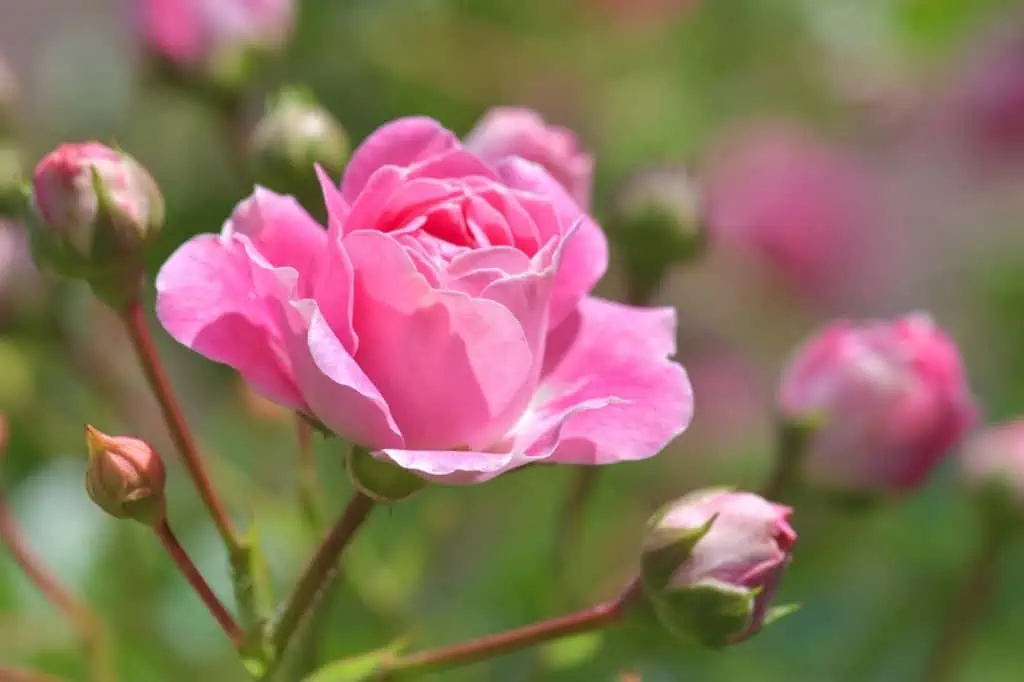
Pink Rose: The pink rose is real and naturally pink. It is a symbol of pure romantic love.
The presence of anthocyanins, a naturally soluble pigment, is responsible for roses’ pink color. This rose has pink to pinkish-red hues.
Lotus
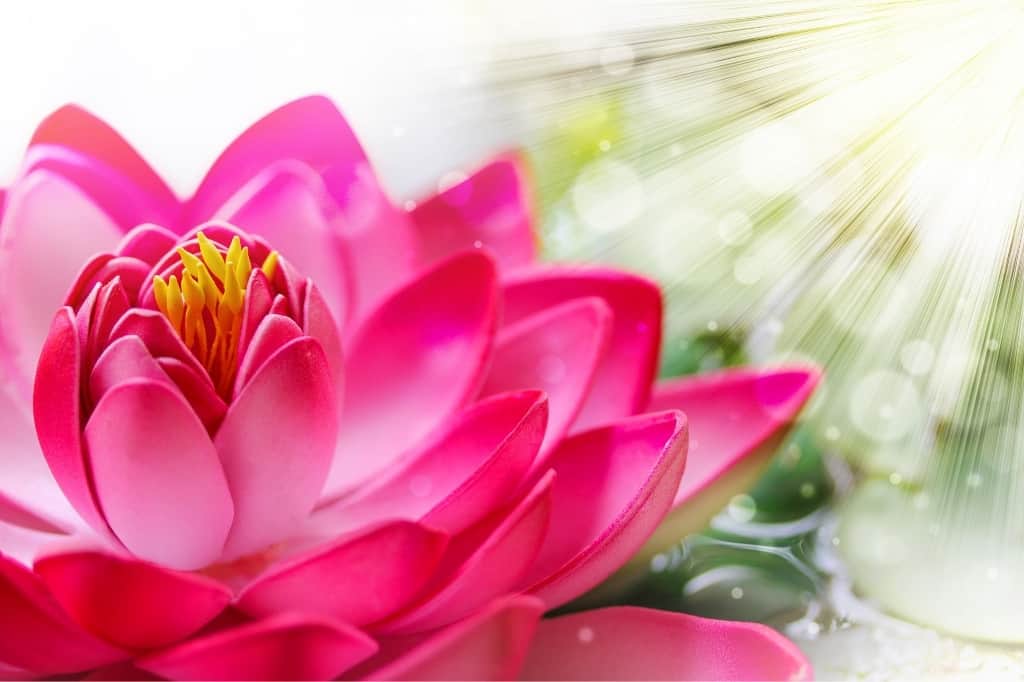
Lotus: A tropical plant with large flat leaves that float on lake surfaces, the lotus is both perennial and aquatic.
It can reach a diameter of 24 inches (60 centimeters), and its flowers are pink or white with a sweet fragrance.
It’s a lovely flower with a lot of symbolism. Many cultures associate the lotus with rebirth and spiritual enlightenment.
The pink orchid is a natural plant that produces beautiful flowers in shades ranging from pale pink to dark pink.
Pink orchids are associated with joy, femininity, innocence, youth, fertility, grace, and gentleness.
Tulip
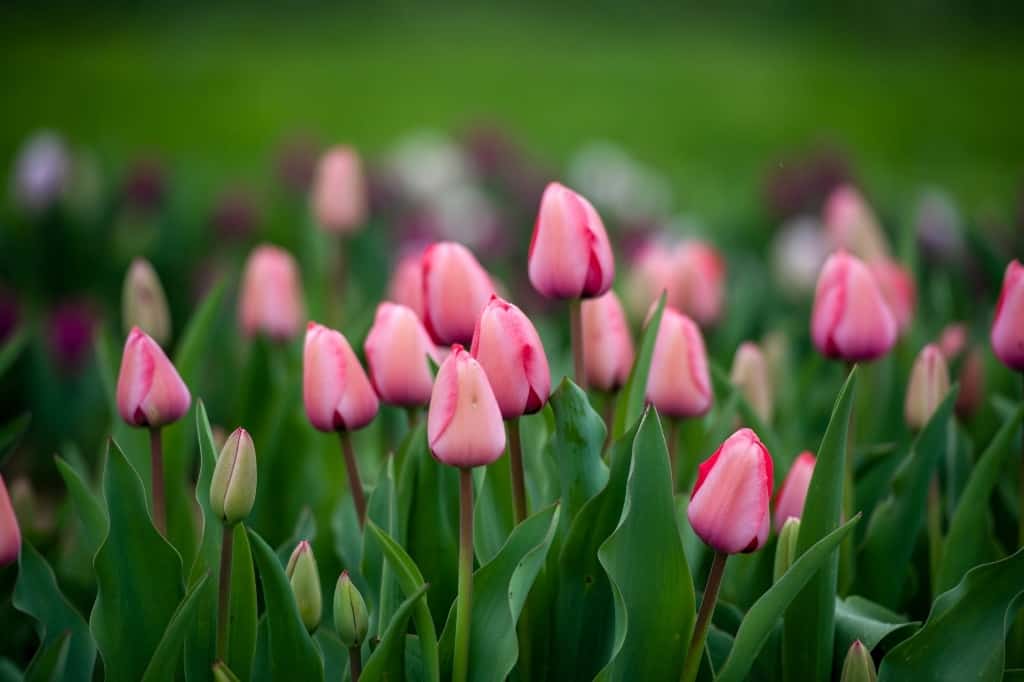
Tulip: Tulips are available in a variety of colors, the most popular of which is pink.
Pink tulips have a soft pink center with darker cherry-pink edges that fade to a soft white. Pink tulips are a symbol of happiness.
Turtlehead
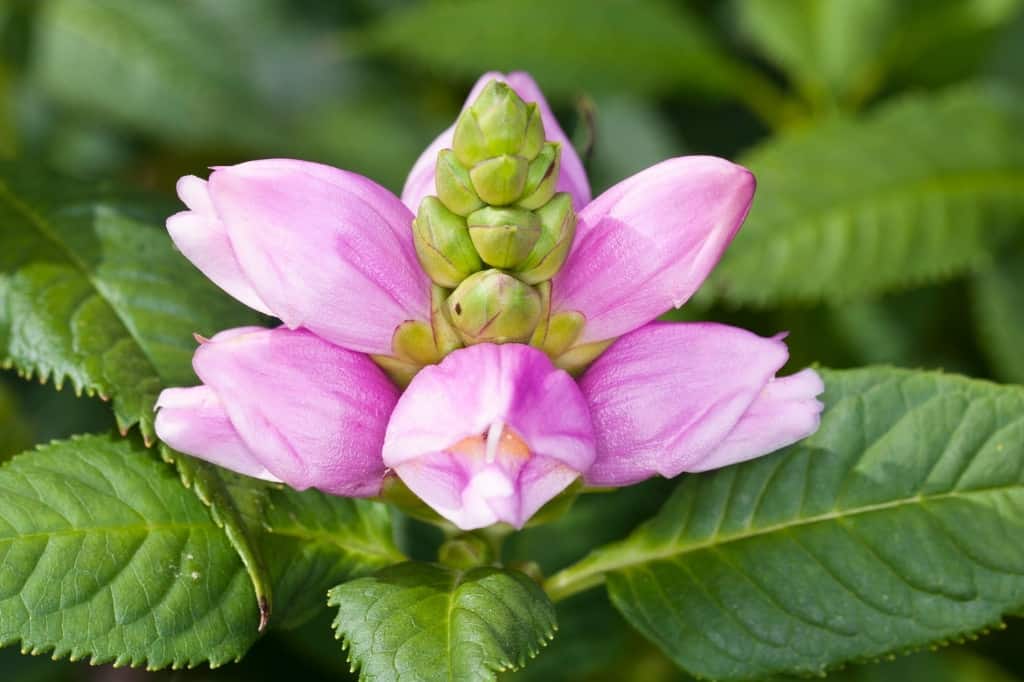
Turtlehead: This non-invasive species is native to North America and is an upright, clump-forming perennial with gorgeous pink flowers in a terminal raceme atop a 2-4 ft. stem.
Pink Chinese Cedar
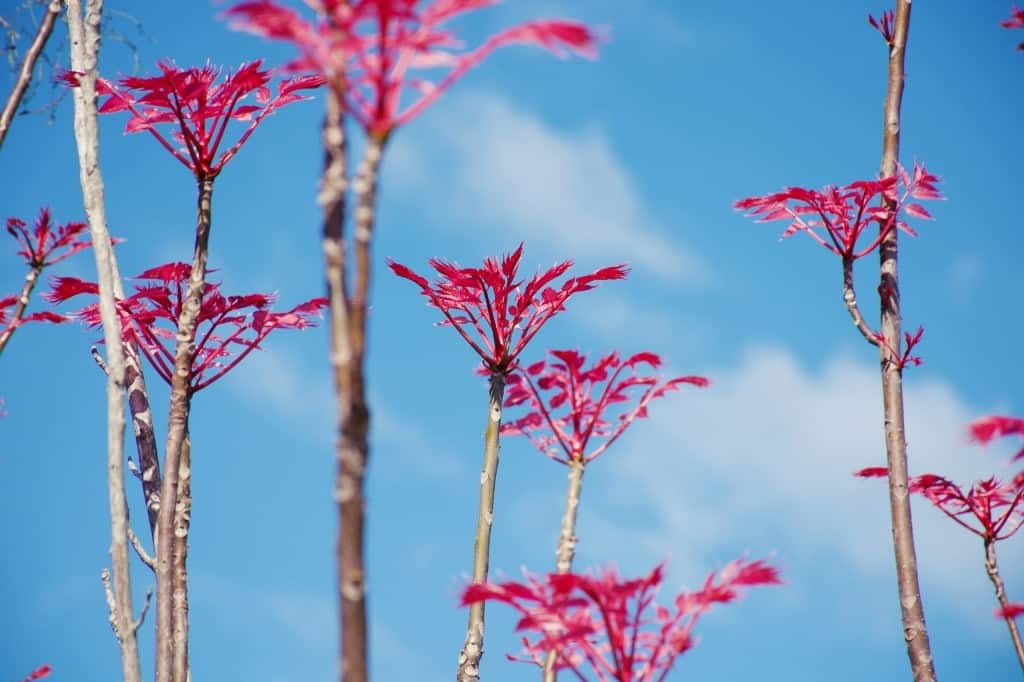
Pink Chinese Cedar: The Chinese cedar is a deciduous tree with red foliage that is native to China’s temperate zones.
It grows tall and slender, with lovely pink leaves in the spring. It is one of nature’s most beautiful pink things and is heat resistant.
Pink Camellia
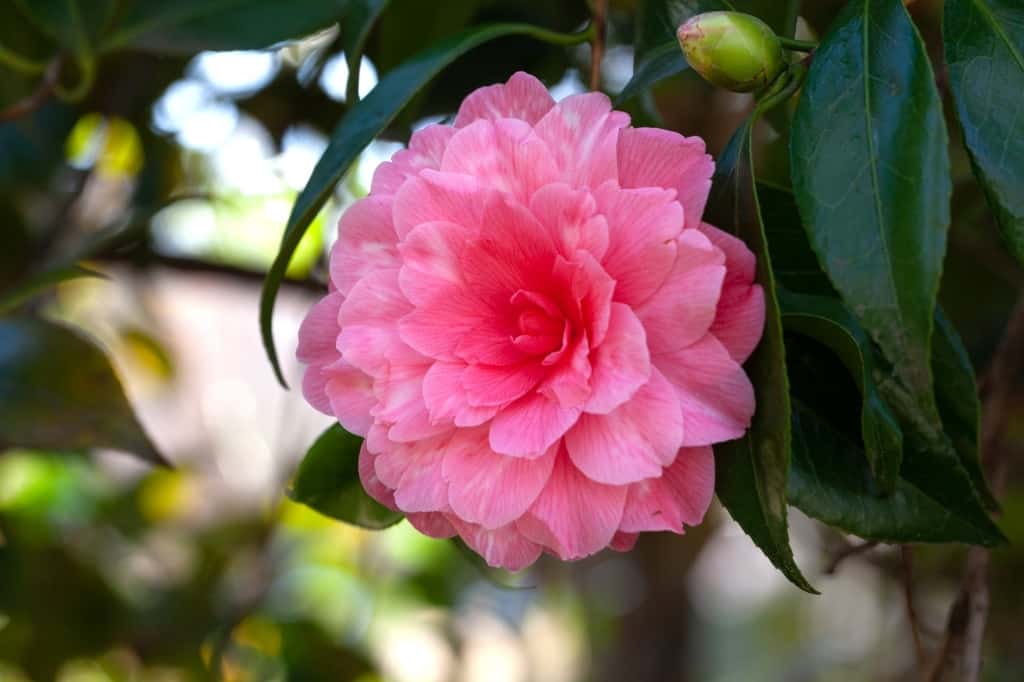
Pink Camellia: One of the most popular Victorian camellias, the pink camellia is an 18th-century flower. It produces pale pink flowers that are medium in size.
Pink camellias have alternate leaves rather than opposite leaves like roses.
Zinnia
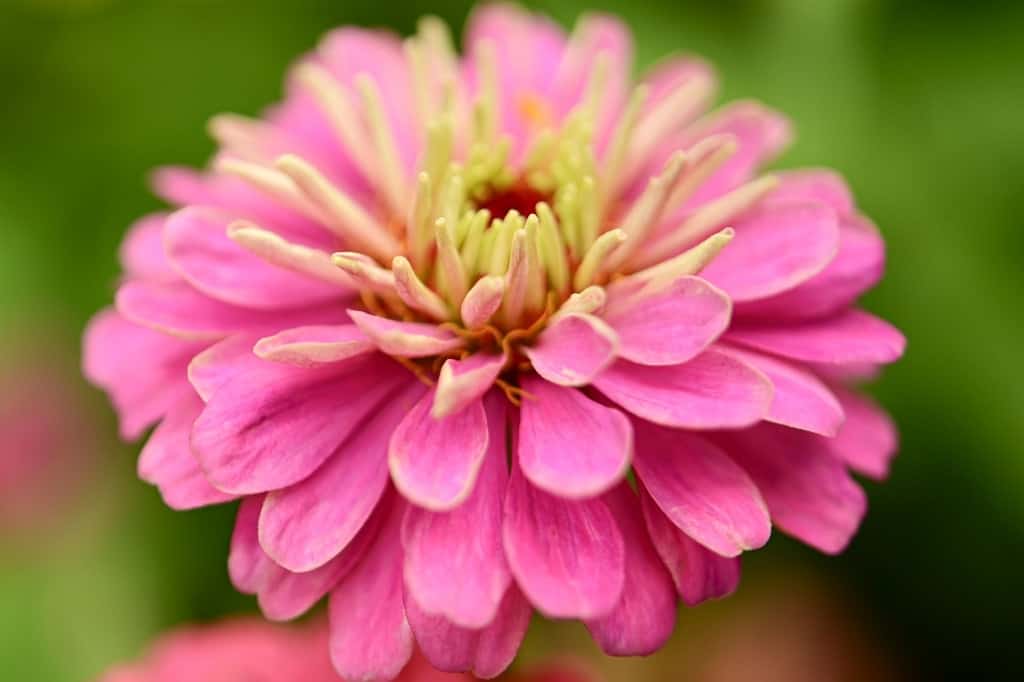
Zinnia: Zinnias appear every year and have an impressive coloristic variation. They are native to the southwestern United States’ dry grasslands and as far south as South America.
Zinnias are available in various colors, including pink, orange, red, peach, yellow, and white.
These plants mature in about 90 days and can grow up to 40 inches tall.
Calla Lily
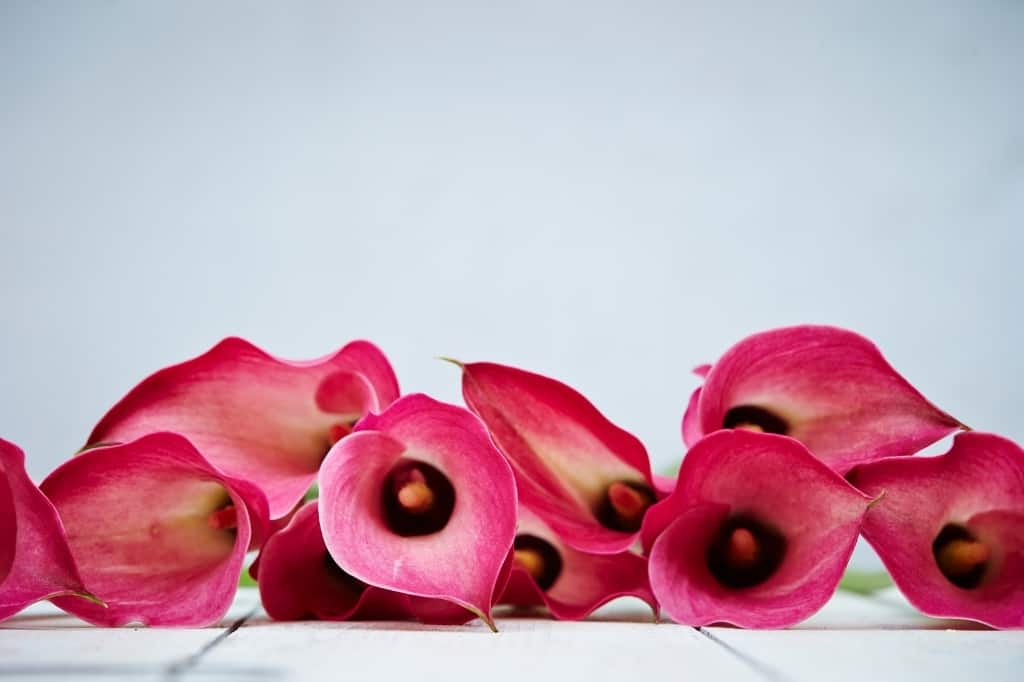
Calla Lily: Calla lilies are semi-evergreen perennials native to southern Africa that produce pink, rose, orange, classic white, lavender, and dark maroon flowers.
They are absolutely stunning for both indoor and outdoor cultivation.
Pink Magnolia
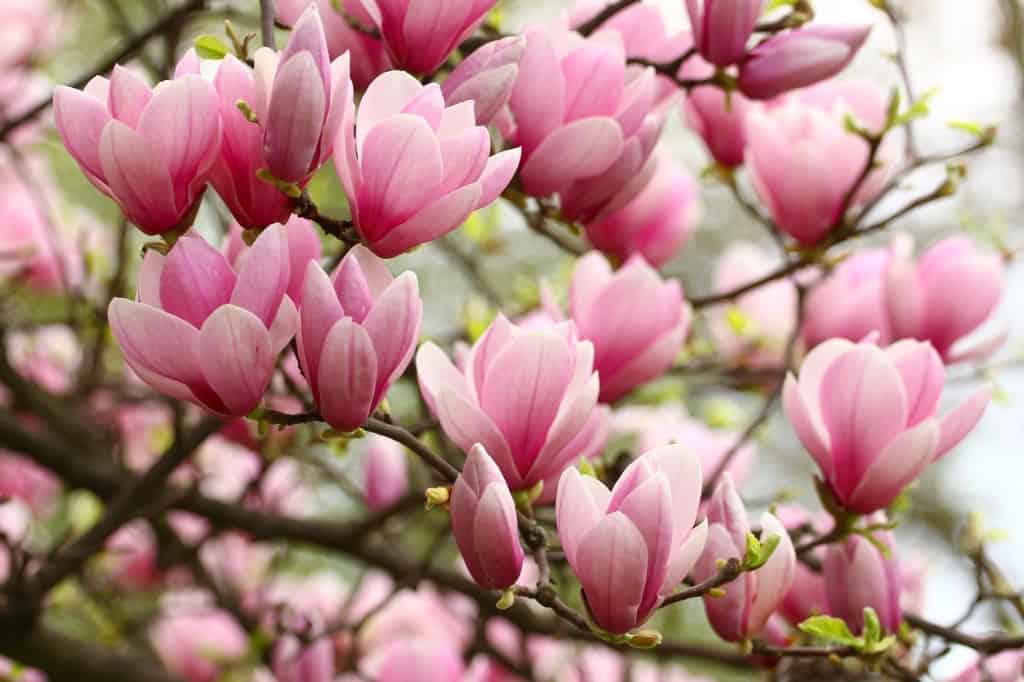
Pink Magnolia: A lovely flowering tree that can reach heights of 70 feet and produces flowers in pure pink, magenta, purple, and pure white.
The flowers have a fruity floral fragrance that is sweet and floral. If you enjoy flowers, this stunning, widely-spreading canopy tree should not be overlooked in your garden.
Pink Magnolia is associated with good fortune and stability in the United States.
Clematis

Clematis: A genus of species in the buttercup family, clematis is a heat-loving plant that is also one of the most commonly planted perennials.
They’re simple to grow and have a long blooming season. The flowers are available in various colors, including pink, purple, red, white, yellow, and blue. Clematis
Pink Fantasy blooms with stunning pink flowers up to 5 inches across (or 12 cm). They’re made up of 6 to 8-pointed pink tepals.
Chrysanthemum

Chrysanthemum: Pink chrysanthemums, native to East Asia, symbolizing the fragility of romantic relationships and happiness.
The warm appearance of pink chrysanthemums brings happiness. Aside from pink, these flowers are available in yellow, orange, red, burgundy, salmon, cream, and white.
Pink chrysanthemums bloom in temperate climates in late summer or early autumn.
Primrose
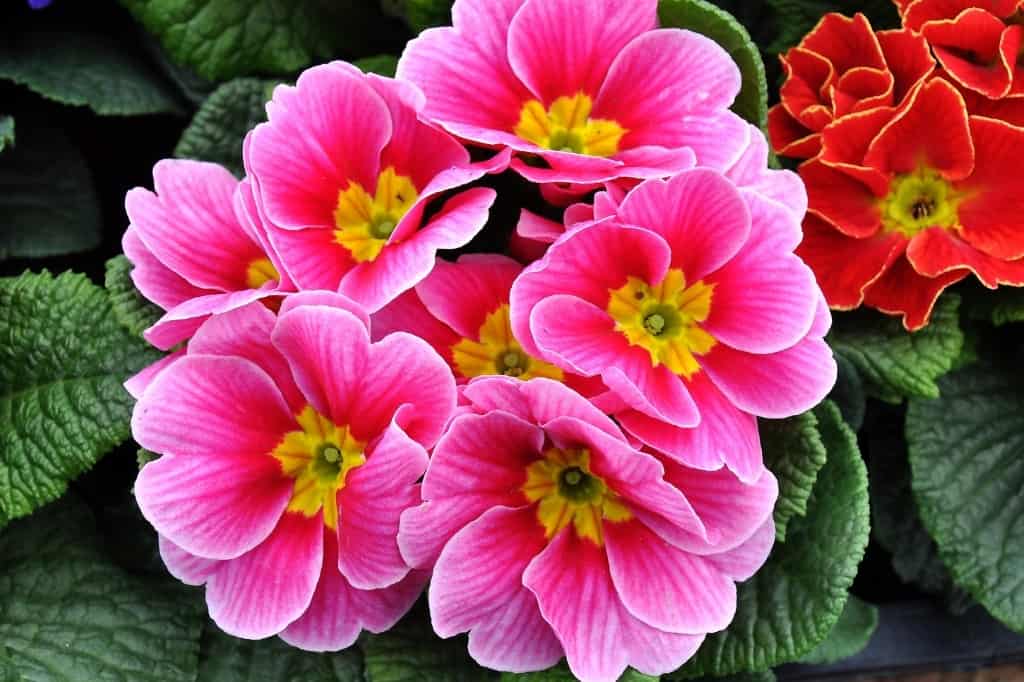
Primrose: Primrose is a flowering plant that is native to southern and western Europe, as well as northwest Africa.
Primrose is a flowering herbaceous plant and one of the most beautiful spring plants. This plant produces four-petaled flowers in pink, yellow, and white shades.
Stargazer Lily
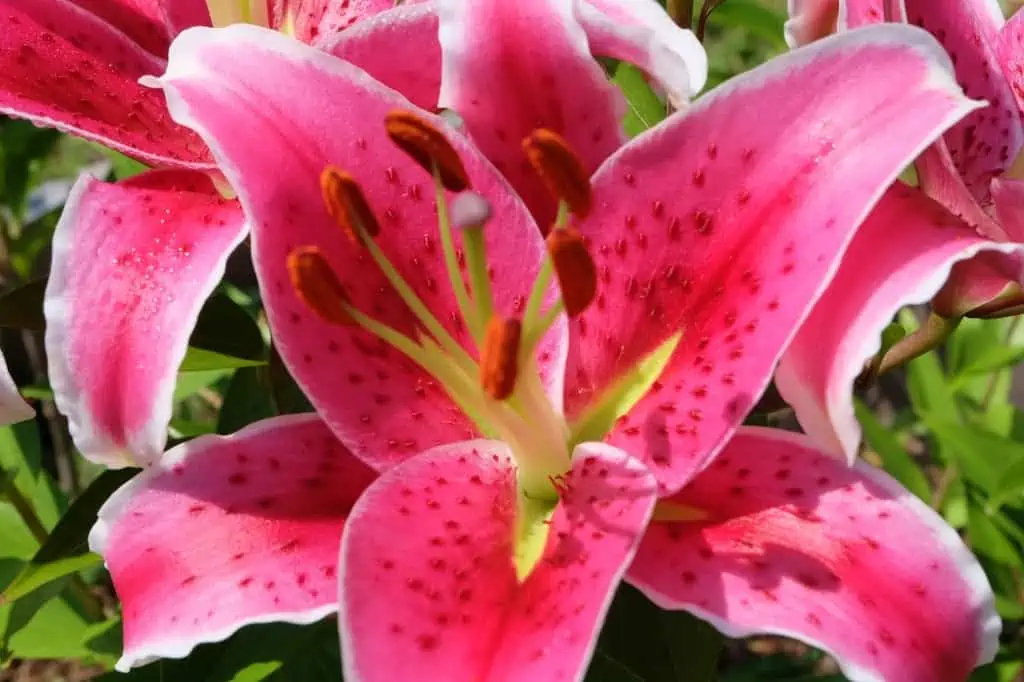
Stargazer Lily: The stargazer, also known as Lilium Stargazer, is an oriental lily hybrid with large, showy flowers that, when blooming, become impressive with their pink-red flowers with a white edging.
Pink Animals
Pink animals and birds are pink because they eat carotenoid-rich foods.
Pink mammals and animals include the pig, the sphynx cat, the bald uakari monkey, and the Amazon river dolphin.
Pink marine life includes the pygmy seahorse, pink betta fish, argentine pink shrimp, carnation coral, pink sea anemones, and pink starfish.
Pink birds include the flamingo, pink ruby, pink-browed rosefinch, salmon crested cockatoo, roseate spoonbill, galah cockatoo, and pink-headed fruit dove.
The Pink Katydid is by far the strangest pink insect in the world.
Pink-browed rosefinch, pink robin, galah, cockatoo, and pink-headed fruit dove are all naturally pink birds.
Amazon River Dolphin
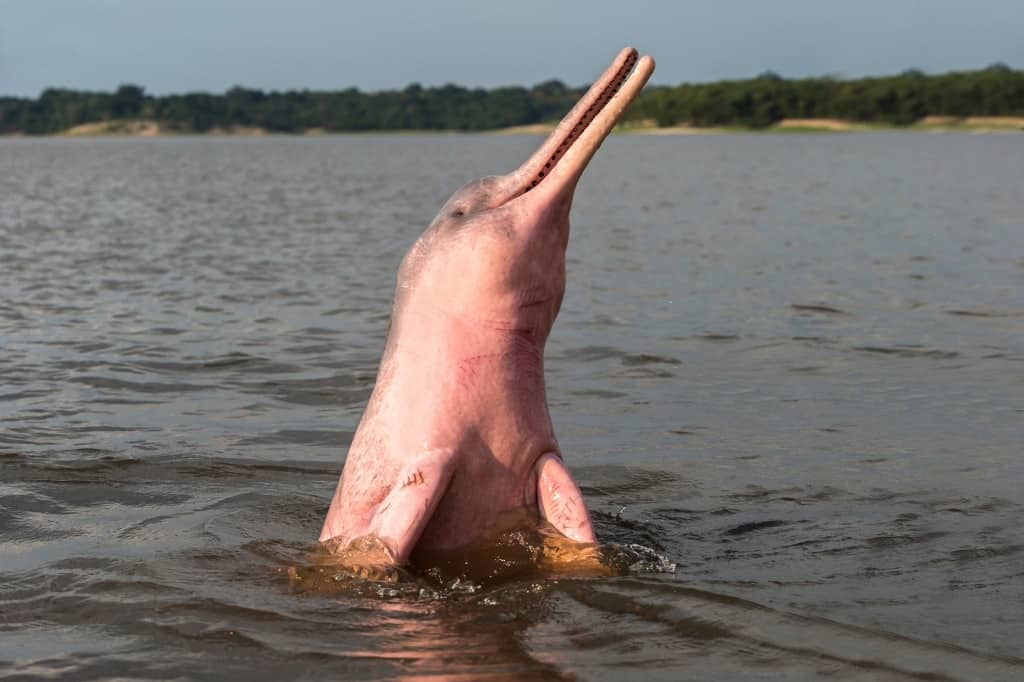
Amazon River Dolphin: The Amazon River Dolphins are the largest river dolphin species, weighing up to 408 lb (185 kg) and measuring 8.2 ft (2.5 m) in length.
Although it is born gray, it gradually turns pink as it grows older. Males are pinker than females.
The pink color of the Amazon river dolphin is said to be scar tissue from fighting for conquest.
Pink Betta Fish
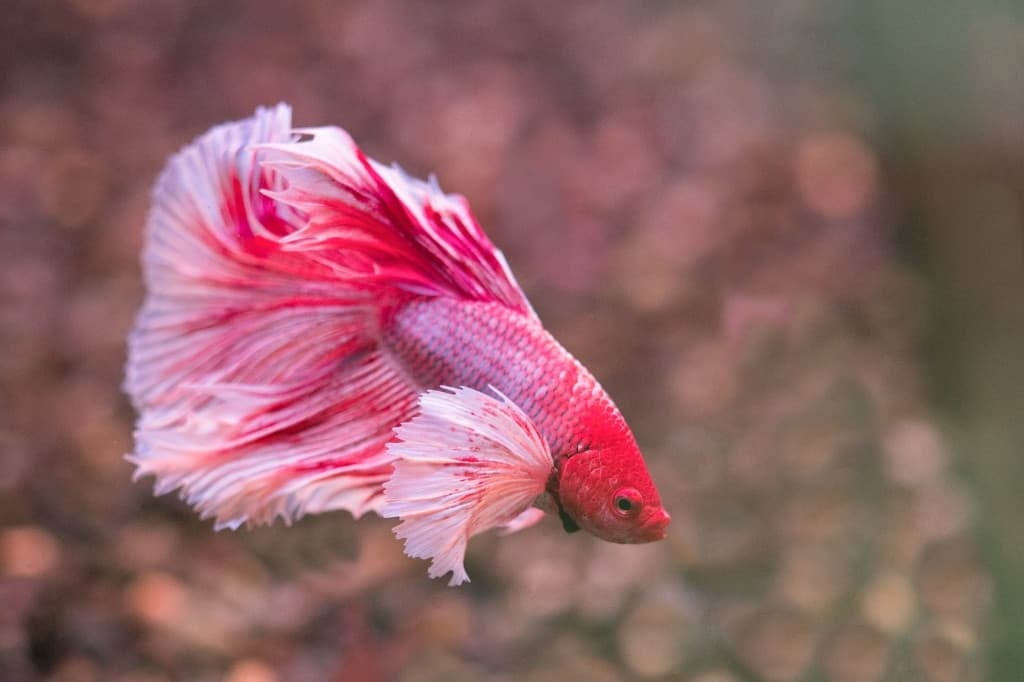
Pink Betta Fish: The pink betta fish is a rare and mysterious creature that is one of the most popular aquarium fish. They are extremely difficult to find in pure pink and cost several thousand dollars.
Argentine Pink Shrimp

Argentine Pink Shrimp: The Pink Argentine shrimp is caught naturally in Argentina’s cold waters. Chefs consider these to be among the sweetest shrimp available. Pink shrimp from Argentina is a vibrant pinkish-red color.
Carnation coral, also known as Dendronephtya, is a soft coral genus that comes in vibrant colors such as orange, pink, and lavender.
Carotene, a pigment, is responsible for the pink and pinkish-red hues of carnation coral. It is one of the most enigmatic pink creatures in marine life.
Crown Jellyfish
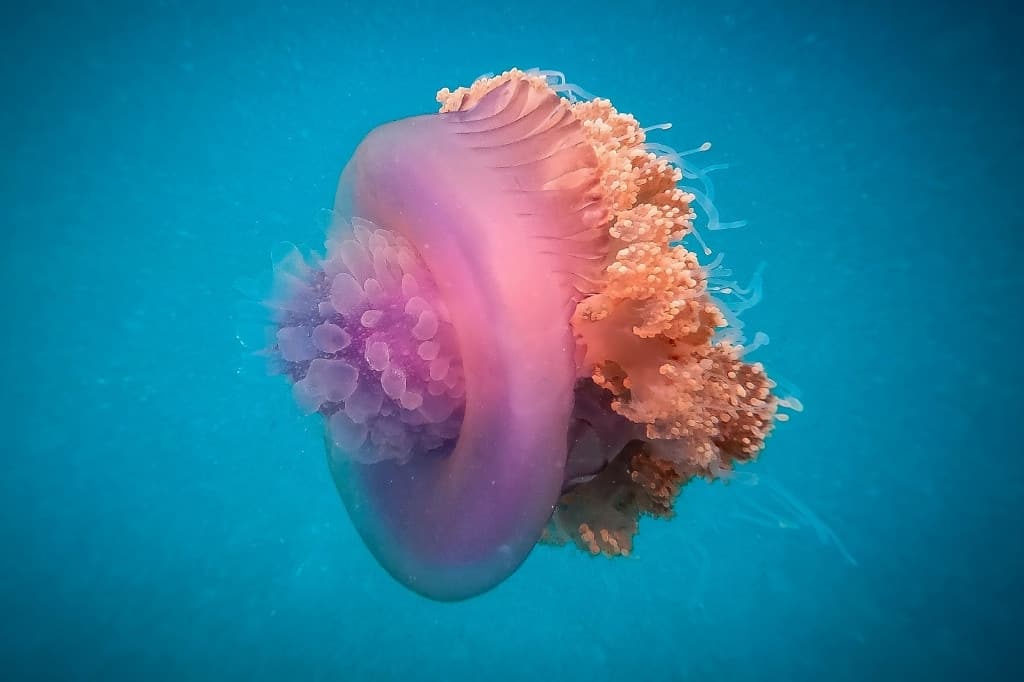
Crown Jellyfish: The crown jellyfish, also known as the cauliflower jellyfish, is a jellyfish species distinguished by tepals stemming from the circular bell.
They swim around with their purple-pink bells that look like umbrellas.
Pink Sea Anemone
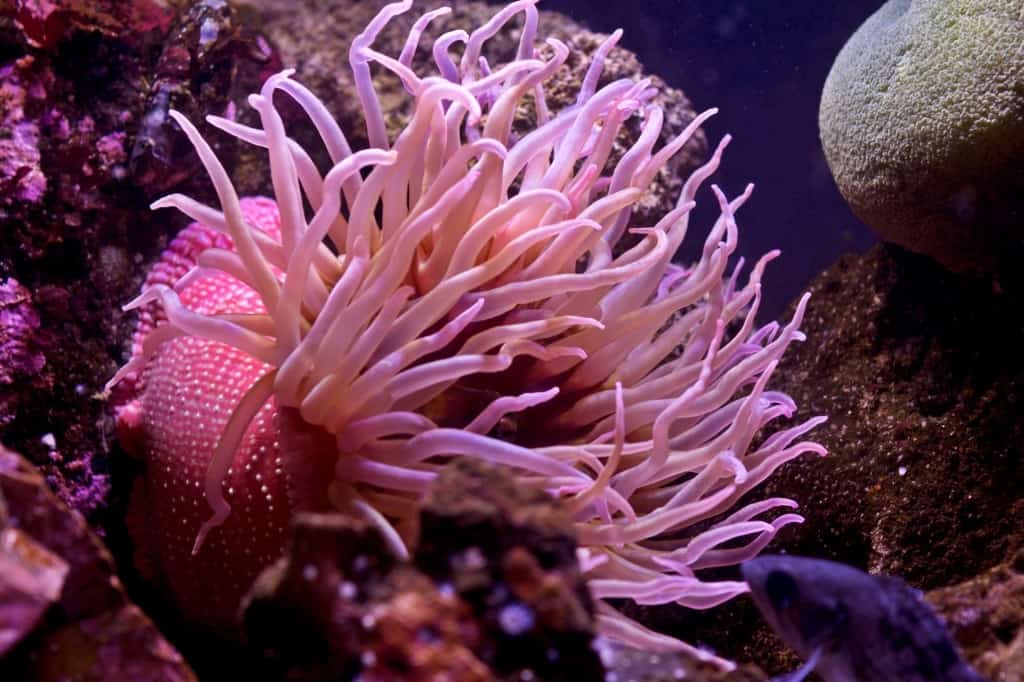
Pink Sea Anemone: Pink sea anemones are predatory marine organisms that live in rocky crevices in shallow waters at depths ranging from 0 to 90 feet (0-30 m).
These bright pink anemones are commonly found in lagoons and on inner reefs. It’s also one of the rare pink things we see attached to rocks on the sea floor.
Pink Starfish
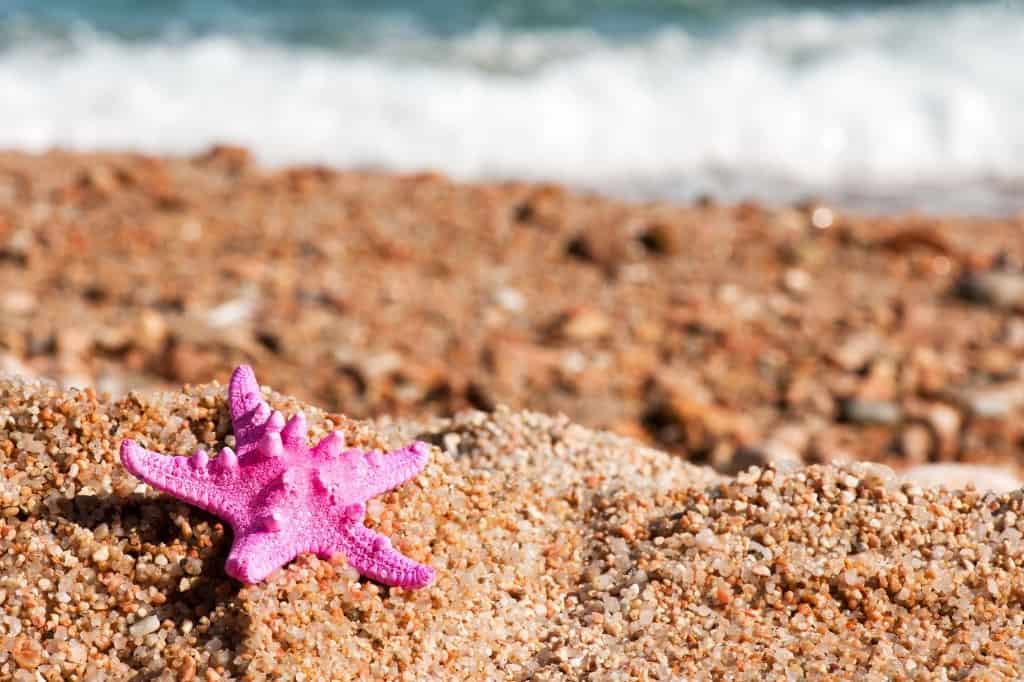
Pink Starfish: Also known as the giant pink sea star, the pink starfish is naturally pink or lavender in color and has five arms that become thicker and thicker as they approach the central disk.
They have no brain; instead of blood, they use seawater to extract the nutrients they require using their nervous system. Pink starfish have a life span of up to 35 years.
Pygmy Seahorse
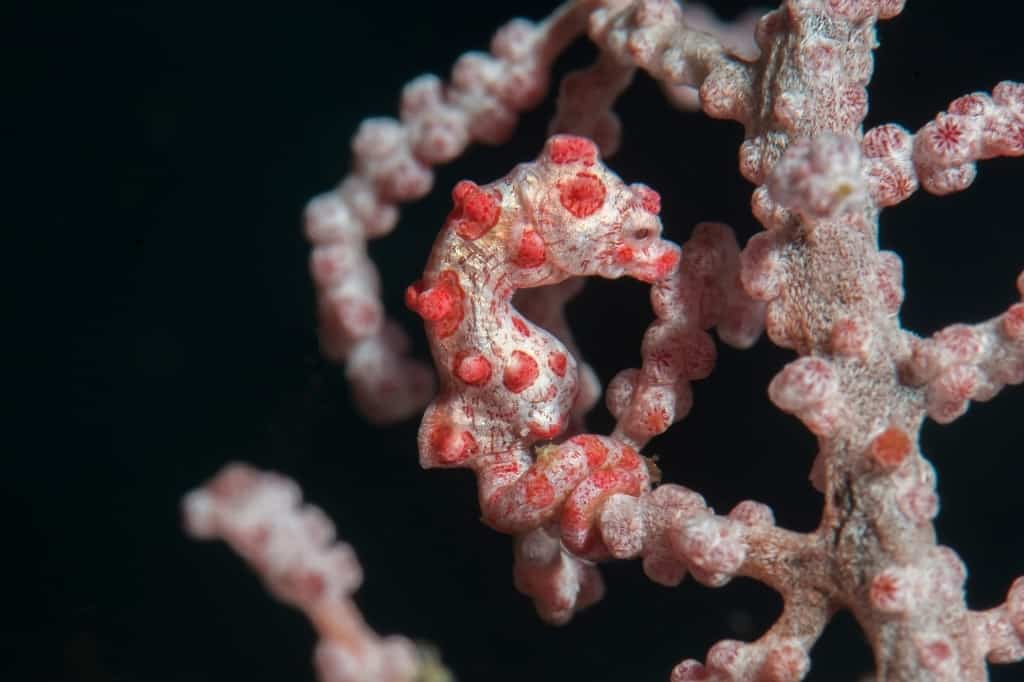
Pygmy Seahorse: The Pygmy Seahorse is a rare miniature syngnathid native to Southeast Asia. They spend the majority of their lives on sea fan coral.
They are tiny and fragile and come in various colors, the most common being white with pink or red highlights.
Pig

Pig: Pigs have turned pink due to genetic modification throughout history. As a result, the black pigments eumelanin and pheomelanin have lost their function.
Thus, the blood vessels beneath the skin give pigs their pink appearance. They are omnivorous mammals known as domestic pigs.
Pork is the most widely consumed meat in the world (36%), according to the United Nations Food and Agriculture Organization.
Sphynx Cat
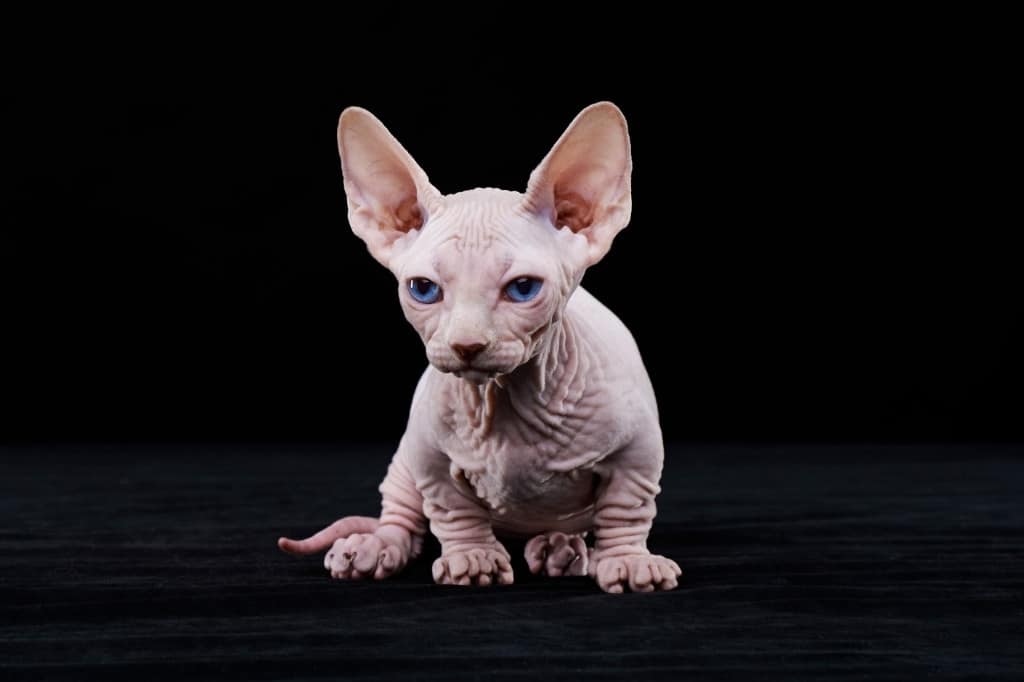
Sphynx Cat: The Sphynx Cat, also known as the Canadian Sphynx, is a furless cat with pink skin. It is famous for its lack of hair due to a genetic mutation, but it is also extremely affectionate.
Bald Uakari Monkey
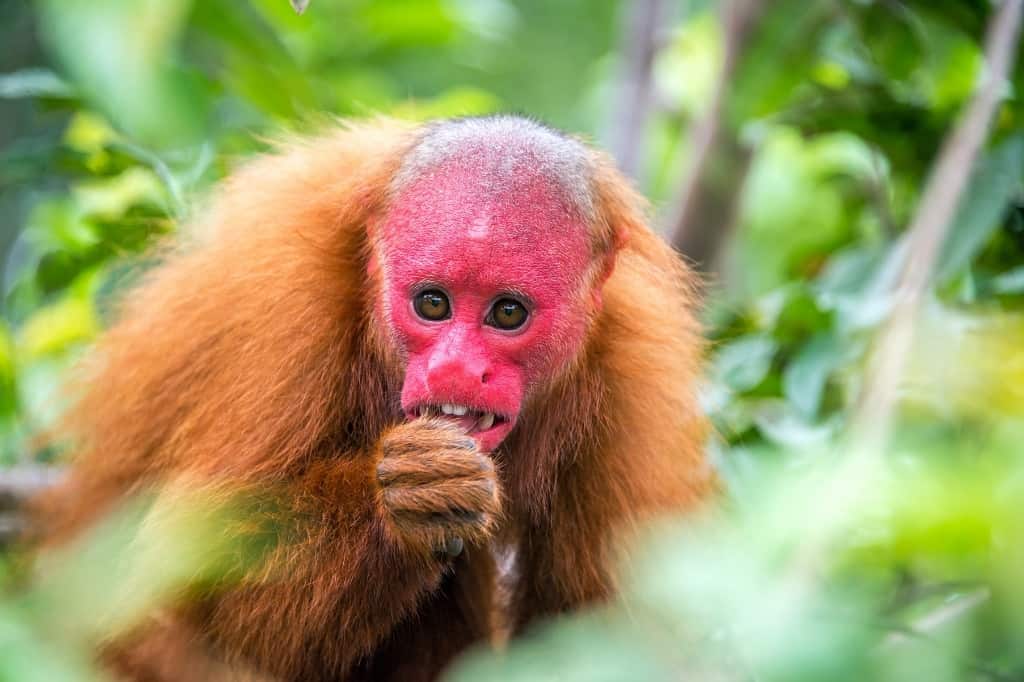
Bald Uakari Monkey: This monkey is native to the northwestern Amazon basin and is one of four species of uakari. It has a pink face, a bald head, and a short tail.
Pink Robin
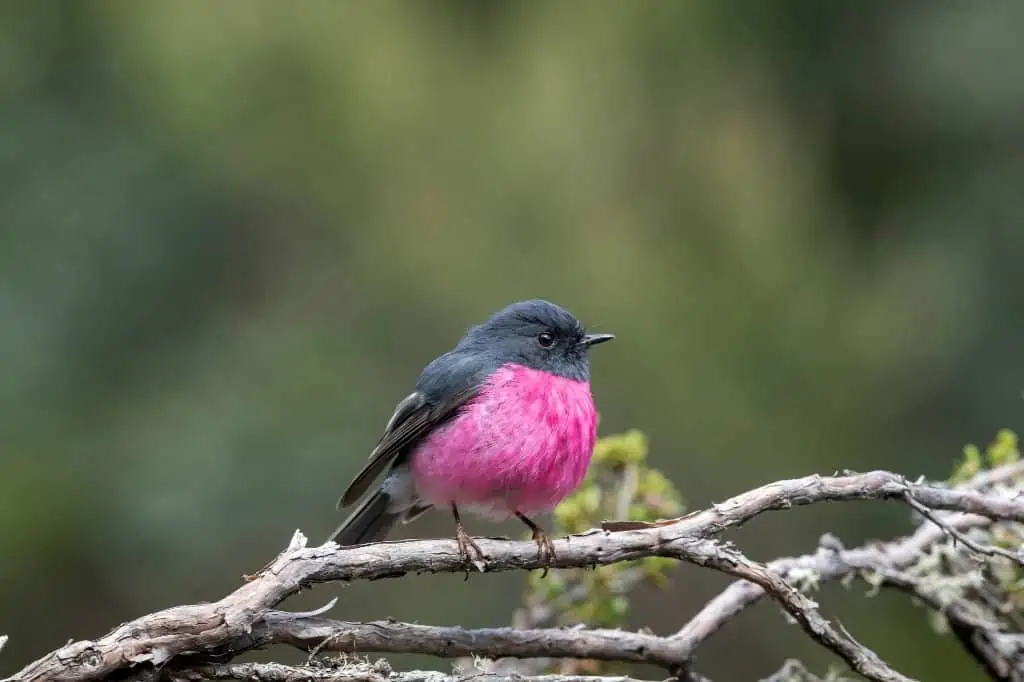
Pink Robin: The pink robin is a small passerine bird indigenous to southeastern Australia.
The pink robin lives in cool temperate forests and has a black back and head plumage with a pink belly. They are uncommon backyard visitors.
Pink-Browed Rosefinch
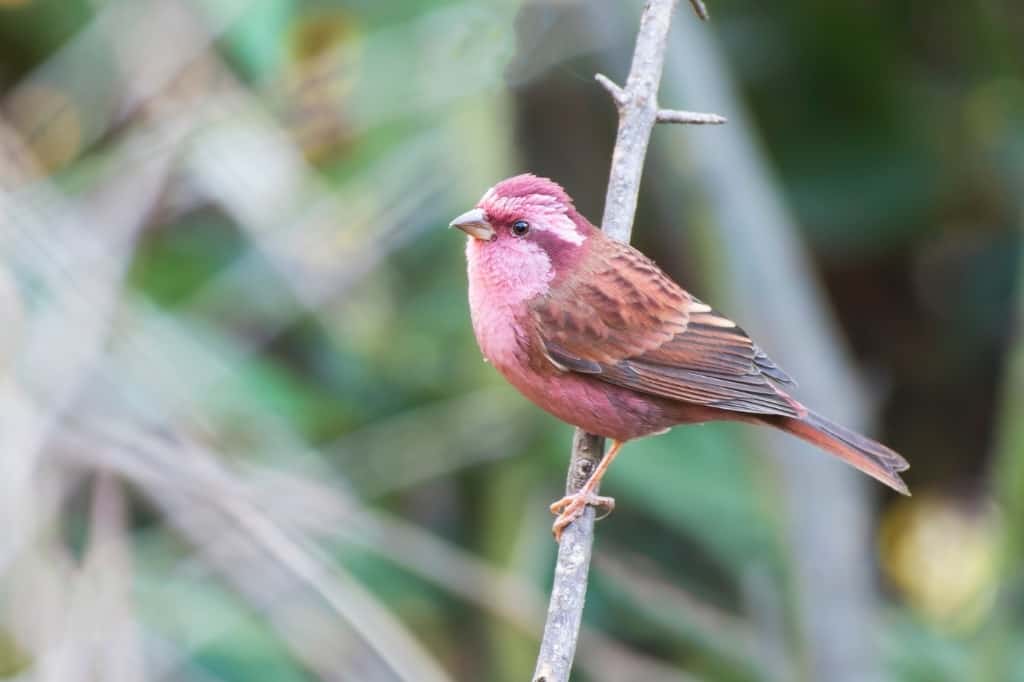
Pink-Browed Rosefinch: The pink-browed rosefinch is a medium-sized Himalayan rosefinch in the Fringillidae family. It’s a bright raspberry pink with brown tones on the back.
Salmon Crested Cockatoo
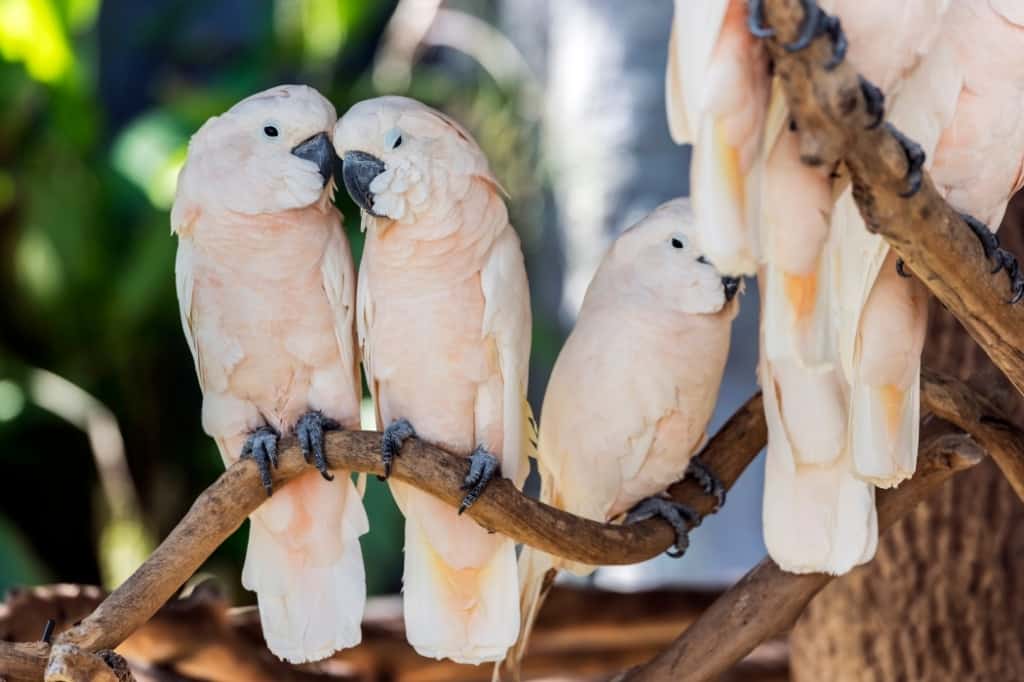
Salmon Crested Cockatoo: The salmon crested cockatoo, also known as the Moluccan cockatoo, is a large pinkish-white cockatoo native to eastern Indonesia. It is well-known for its crest.
Pinkish Spoonbill
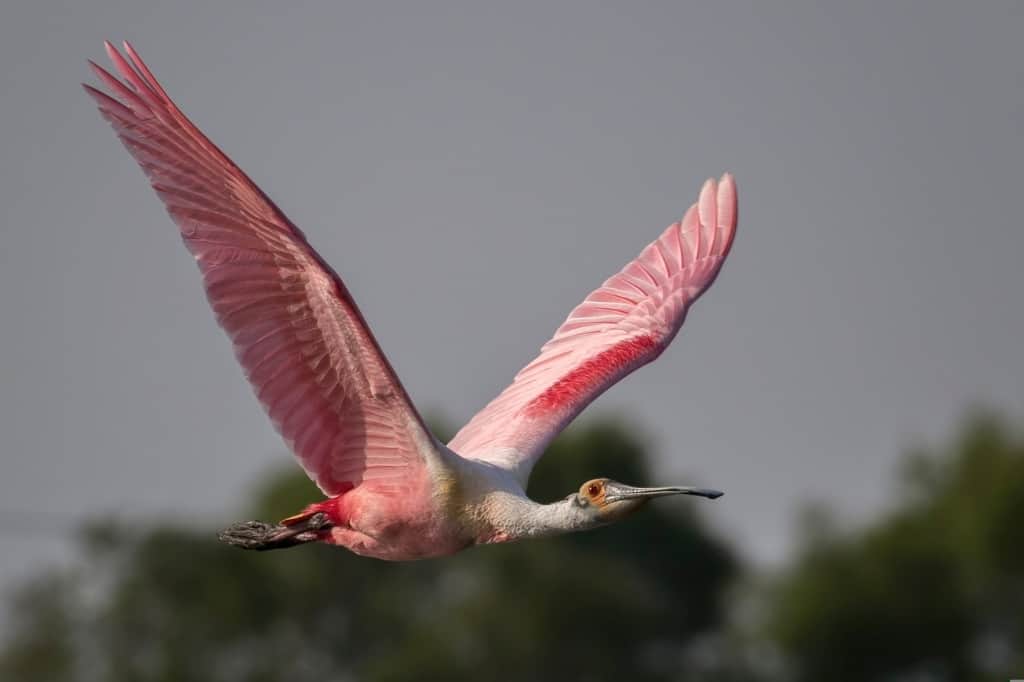
Pinkish Spoonbill: Roseate spoonbills, which are close relatives to flamingos, are gregarious birds with bright pink feathers that prefer bays, estuaries, and marshes.
Galah Cockatoo
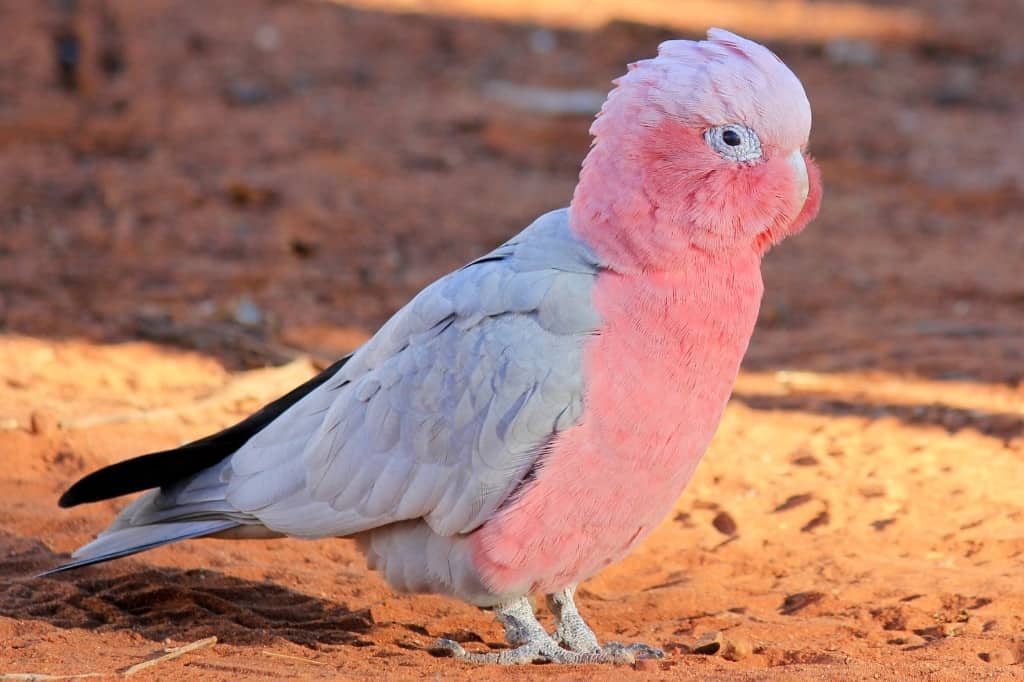
Galah Cockatoo: Also known as the pink and grey cockatoo, the galah cockatoo is a wonderful and energetic pet that can live for up to 40 years.
It is an intelligent bird that can learn to imitate human voices and even talk.
Southern Carmine Bee-Eater
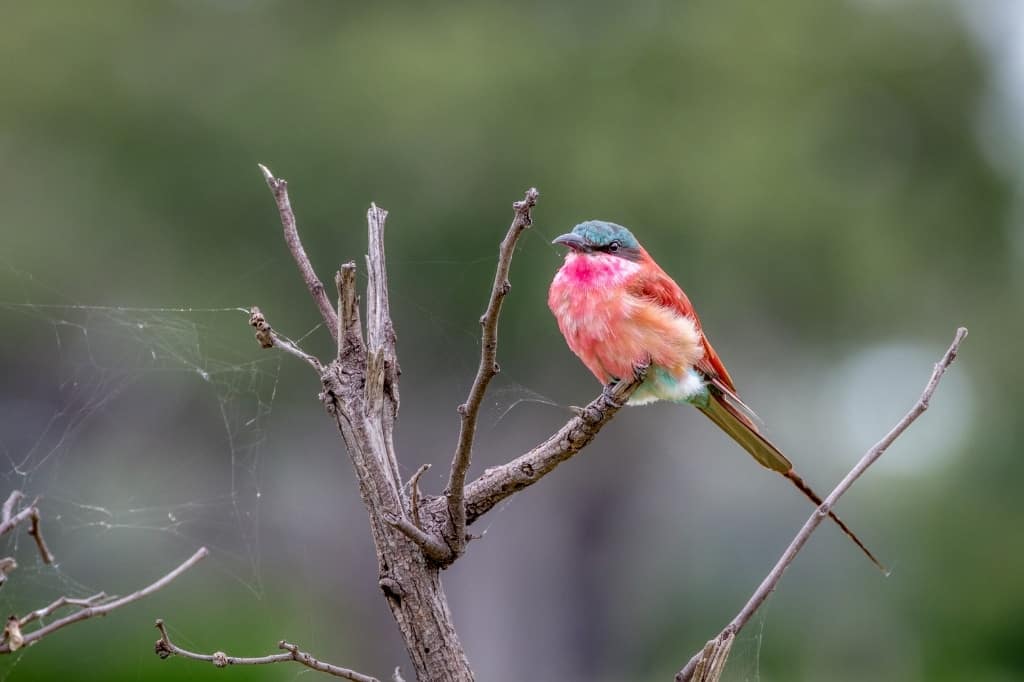
Southern Carmine Bee-Eater: A migratory bird species native to sub-equatorial Africa, the southern carmine bee-eater spends the winter in Zimbabwe and Zambia between August and November.
This bee-eater has a stunning carmine pink plumage with teal-blue highlights.
Pink-Headed Fruit Dove
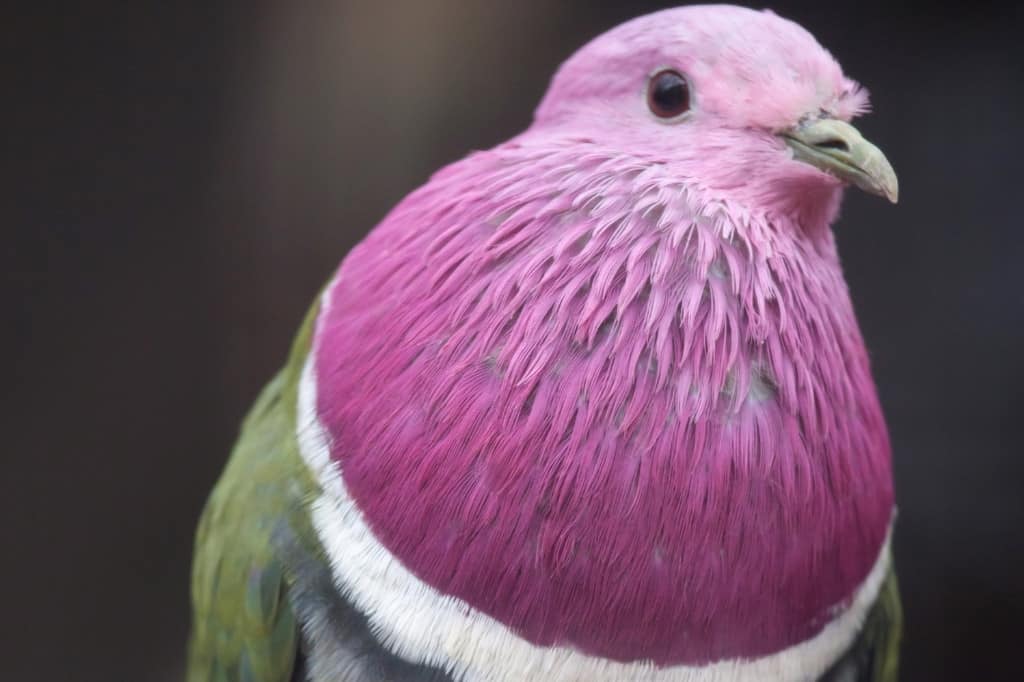
Pink-Headed Fruit Dove: Also known as the pink-necked fruit dove, this endemic bird is native to Indonesia and can be found in mountain forests at elevations ranging from 3280 to 7217 feet (1000 – 2200 m).
Pink Katydid
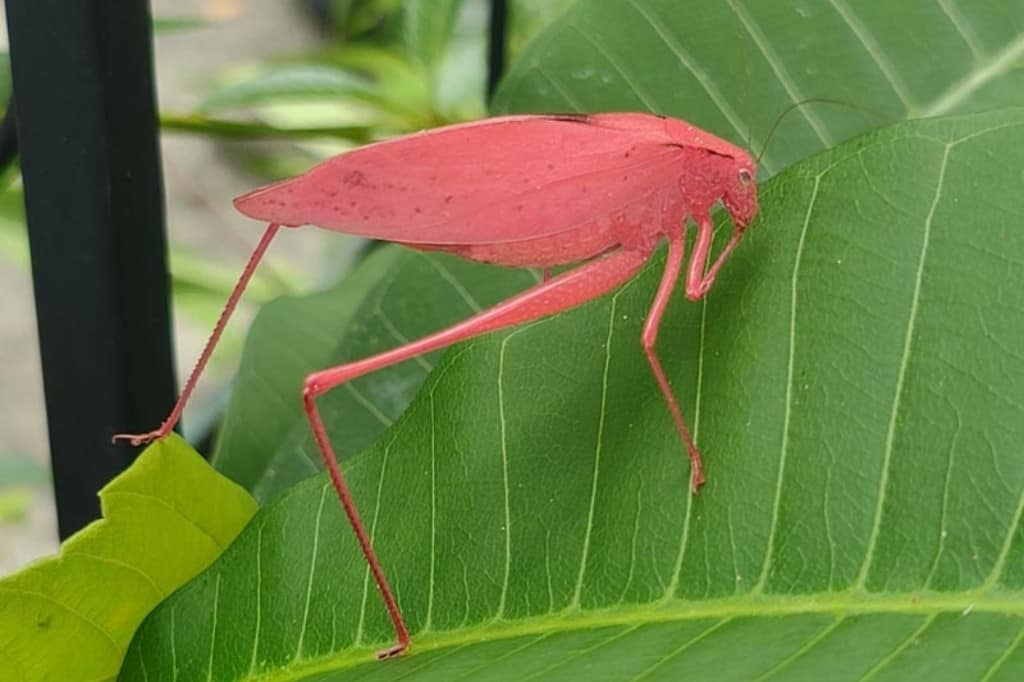
Pink Katydid: The pink katydid is a color morph of the green katydid that was discovered in 1887. It is a very rare pink thing, with only one in 500 having this pink pigmentation.
Pink Orchid Mantis
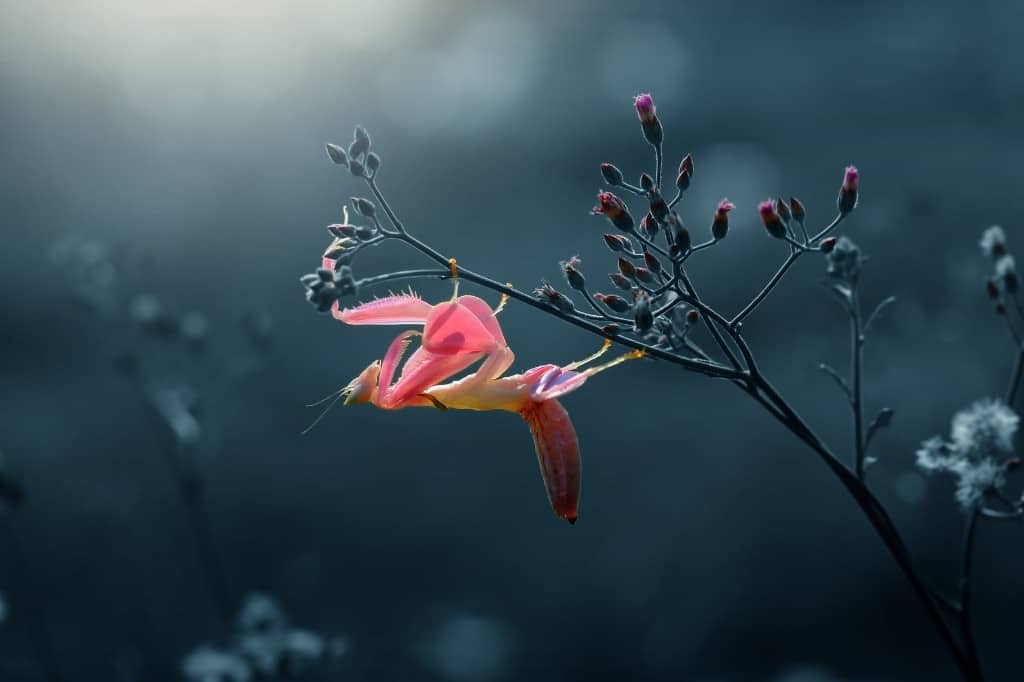
Pink Orchid Mantis: If you’re looking for pink things in nature, look no further than the pink orchid mantis.
Pink orchid mantises, which are native to Southeast Asia’s rainforests, feed on butterflies, moths, and jungle fruits and are rarely seen.
Flamingo
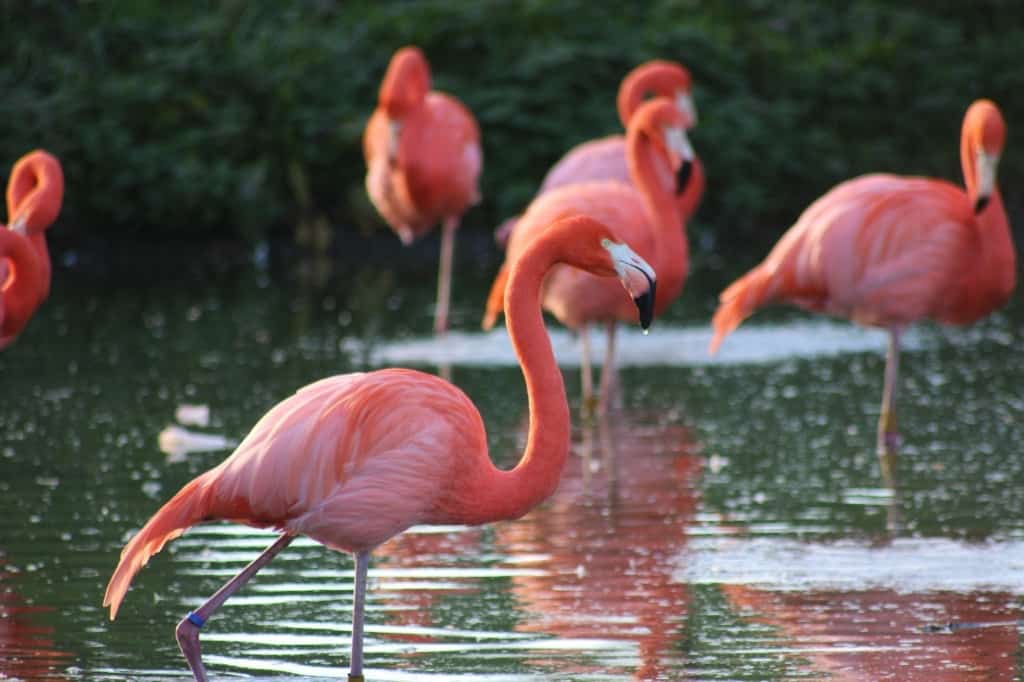
Flamingo: Flamingos are pink because they eat microscopic algae and brine shrimp, both of which are high in carotenoids (beta-carotene). This red-orange pigment makes the skin pink.
Purple Harlequin Toad
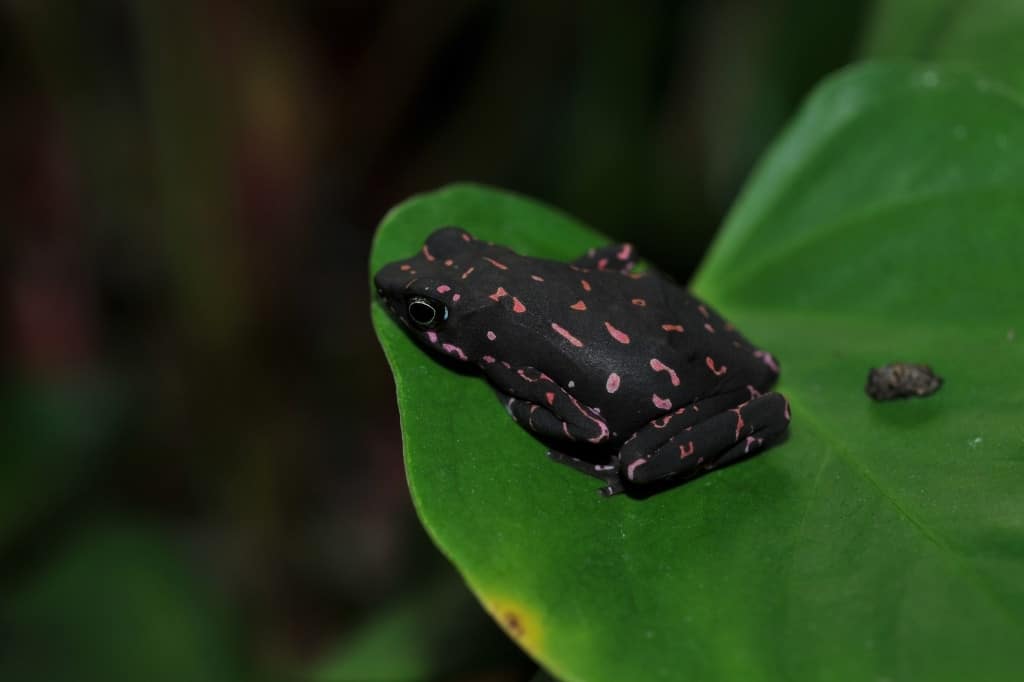
Purple Harlequin Toad: Also known as the purple fluorescent toad, this species of ray toad lives in the highlands of central French Guiana. They are typically black with a wicked pink mottle.
Queen Conch
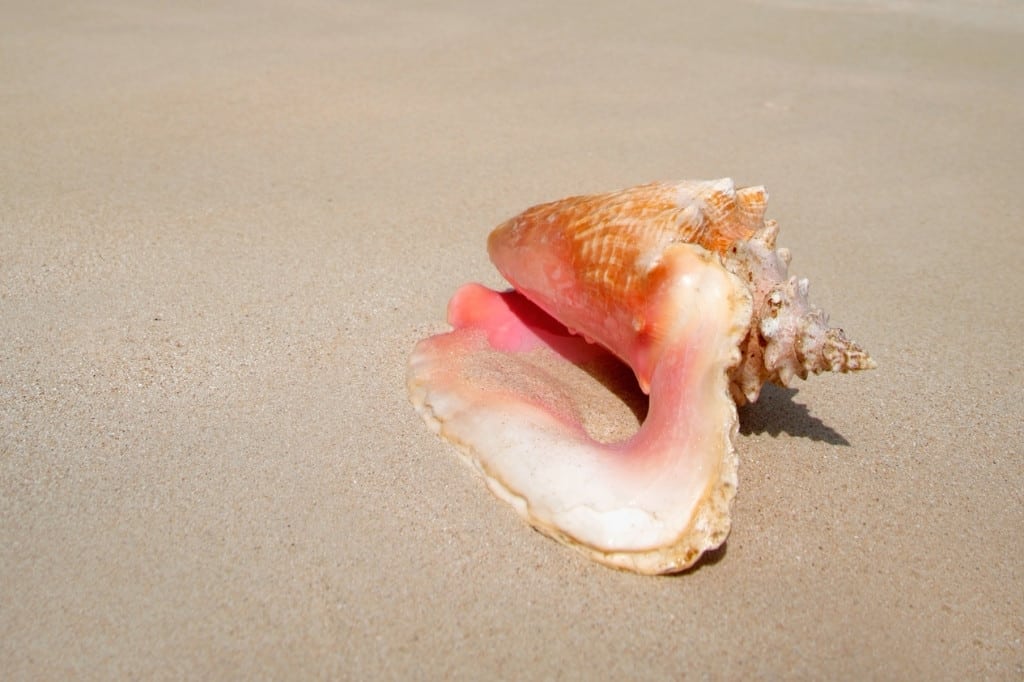
Queen Conch: A large edible sea snail, the queen conch is a type of marine mollusk. It is found on the Caribbean, Bahamas, and Bermuda coasts. It has a large spiral shell that is frequently lined in pink.
Things That Are Pink in Nature
This list of naturally pink things includes the most significant pink plants, animals, foods, and things on the planet.
We hope it has given you an idea of how many pink things are in nature.

